#double sided. 7.5 cm.
Explore tagged Tumblr posts
Text
hiii i am Checking ur Interest :) some mygo charms ? anyone want some mygo charms ? examples of designs :)
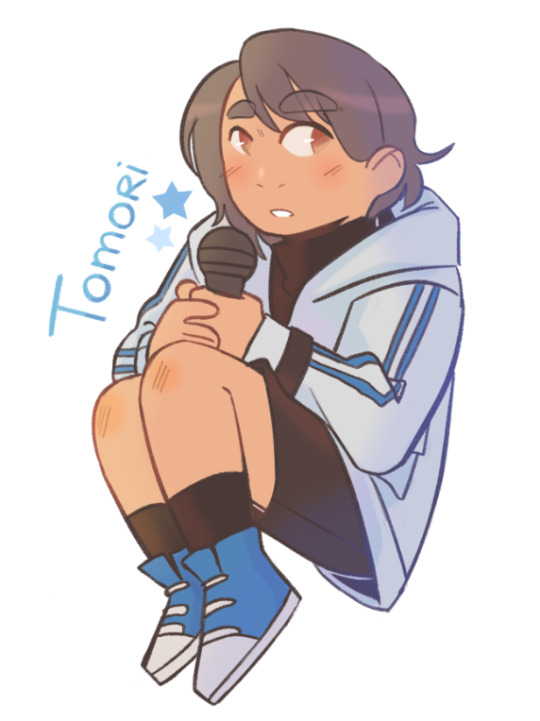
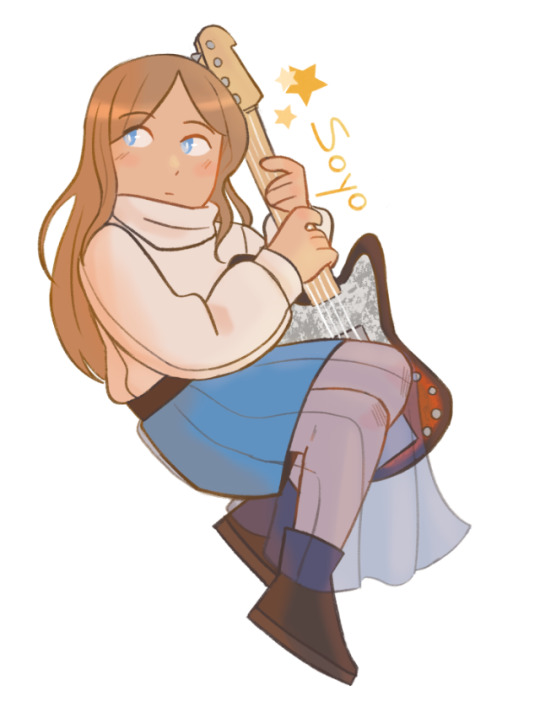
#mygo#bandori#bang dream#for details it would be a clear acrylic charm#double sided. 7.5 cm.#around 12 euros with decreasing prices#crossing over the interest check from my twt bc i think theres some ppl that only follow me here and not there !!
17 notes
·
View notes
Text

💥PREORDER! SUN WUKONG ACRYLIC STANDEE 💥
Full set includes 1 base and 1 standing piece.
15cm acrylic standee (without the base)
Double sided!
Base size: 7.5 x 7.5 cm
You can check them out here!

#sun wukong#black myth wukong#journey to the west#the monkey king#acrylic stand#the destined one#jttw sun wukong#jttw#sun wukong x reader
313 notes
·
View notes
Text

The googliest of eyes Im crying he is so stupid. Truly a sea pancake with no thoughts in his head.
Done in clip studio paint EX, he will be keychained and hopefully I will be able to add him to the shop and sell him if yall would want him. I will order two options, both of them double sided acrylic keychain with holograpahic stars, one around 7.5 cm with a clamshell looking clasp, and the other around half the size with a string ti attach to the phone. Hopefully I could do it soon. I will post a poll, please pass it around, and mark if you would like to order him from my kofi shop (actually want to, and will do it). If you will, I will order a small selected amount, to test the print quality and how long it gets here and if people will actually buy it, and if it will go well it will go permanently into my shop because he truly is the stupidest most adorable baby.
-Leo
#leo#artists on tumblr#art#my art#clip studio paint#digital art#sea pancake#pancake#food inspired#manta ray#the most dumb and vacant googly eyes in the history of the universe#my polls#talking art business#hopefully a keychain in the future
13 notes
·
View notes
Text
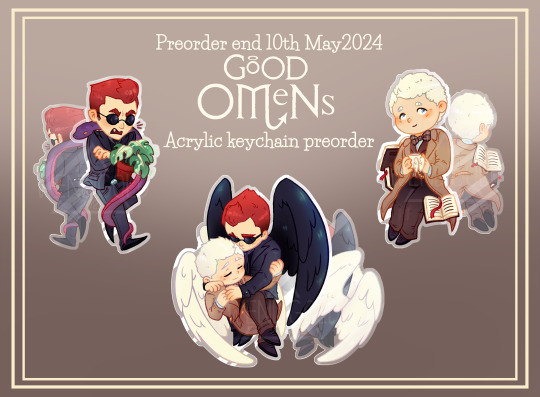
That's it ! They're coming VERY soon 👀 ! Good Omens acrylic keychains !
✨All 3 are double sided ✨Epoxy coating on one side ✨7.5 cm (3")
Pre-orders start April 10th and end May 10th, and it'll be on my Etsy : https://wendigoldarts.etsy.com
13 notes
·
View notes
Text
Diabetes Lecture
Dr. Samaan
8/23/23
HgbA1c 5.7%-6.4% is prediabetes
HgbA1c 6.5% is diabetic
Normal HgbA1c 4.8-5.6% is normal
DM: A1c 6.5%, BG 126, random BG >200 with symptoms
The A1c has to be a lab draw in order for you to use it to make the diagnosis. So a POC HgbA1c doesn’t count to make the diagnosis.
Screen everyone age 40-70 who are overweight or have risk factors; younger than 40 and obese with risk factor; screen q1-3 years. Risk factors: HDL<35, TG >250, depression, on atypical antipsychotics, high risk populations (non-white), OSA/sleep issues, HIV+ for 15+ years on meds. Old HIV meds caused endocrine issues. Newer HIV meds don’t unless they’ve been on them for a long time.
You don’t need to be fasting to check HgbA1c. Not covered as screening by CMS. A1c not accurate in GDM, renal failure, anemias, renal failure, liver disease.
Prediabetes: 5-7% weight loss will cut the risk of progressing to diabetes by 1/2! Moderate exercise: of 150 minutes a week (e.g., brisk walking 3+ mph), water aerobics, bicycling 10 mph or less, tennis (doubles), gardening—OR 75 minutes of vigorous intensity exercise a week.
Metformin started in prediabetics decreases progression by 31%! Shown to decrease CVD risk. Works best for BMI>35. Metformin can cause low B12. We should use “med monitoring” code annually in pts on metformin. Diarrhea is a common adverse effect. If pt can’t leave the house because of the diarrhea, try the extended release form.
GLP1 agonists and SGLT2 inhibitors could be used in prediabetics. It’s in the works.
If A1c of 9 and BG >200, you will have less fatigue, polyuria, blurred visions, skin infections.
A1c <7.5 à improved quality of life and increased productivity at work
Goal A1c is <7%
Tighter control in younger pts is ok.
Older pts can have A1c goal of 8.0%; avoid hypoglycemia and side effects of increased meds.
Metformin and lifestyle modifications are first line management.
You can start with something other than metformin, but insurance might not cover it.
DM education can help drop A1c by 0.6% or more. WDH and PRH have diabetes education classes.
Diabetic Benchmarks/Screenings:
Statins! All diabetics over 40 should be on moderate to high intensity statin. Under 40 if additional CVD risk factors.
Pts with DM have increased number of small LDL particles which tend to be more associated with ASCVD.
DM is the leading cause of CKD. Check urine microalbumin yearly. ACE/ARB is HTN and proteinuria, urine Cr >300. Go yearly for dilated eye exam. DM is the #1 cause of blindness in the US.
Nerve damage causes the fat pad on the sole of the foot to move, leaving decreased cushioning which predisposes to diabetic foot ulcers. Foot exam should be every visit if loss of sensation. Should do a foot exam annually. Check the skin, document hammer toe, charcot foot, bunion, pes planus.
Get an Ankle Brachial Index (ABI) if you cannot palpate a pulse. Get Toe Brachial Index (TBI) if ABI is not accurate.
Document presence of diabetic neuropathy. Assess for B12 deficiency, TSH, metals, etc.
Metformin, statin, annual vision screen and urine microalbumin, foot exams, diabetes education.
Sulfonylureas (e.g., glipizide) have no long-term benefits, cause hypoglycemia.
3 notes
·
View notes
Text
Price: [price_with_discount] (as of [price_update_date] - Details) [ad_1] We pay great attentions to the shopping experiences from the customers. Your satisfaction will be a great motivation for us. If you have any problem with the product,pleas contact us at first time. We will do our best to solve any problems and provide you with the best customer services. Product Dimensions : 25.4 x 5.08 x 19.05 cm; 59 g Date First Available : 28 October 2021 ASIN : B09JK5HCBL Department : womens Item Weight : 59 g Item Dimensions LxWxH : 25.4 x 5.1 x 19.1 Centimeters Generic Name : Travel Accessory- Cosmetic Bag 【MULTIFUNCTIONAL COSMETICS BAG】- Easy to store small items, makeup brush, etc., to make your daily make-up, cream, lipstick, perfume and other beauty things organized and protected. An internal zipper pocket that facilitates storage of your money, credit cards, jewels or other personal items. 【LARGE CAPACITY & LIGHTWEIGHT】- The size is 10*7.5*2 inch which has plenty of storage space to store your lots of cosmetics. Easily carry cosmetics makeup tools like lipstick, eye shadow, or men's shaving kit. Smooth zipper in vantage appearance, tight to protect items in, it can ensure your items not easy to fall off. 【PREMIUM MATERIAL】- Made of high-quality canvas material with marble print, these makeup bags is scratch-resistant, durable and water-resistant, the sturdy zipper can keep your beauty products in place. 【APPLICATION】- Good Friends cosmetic travel pouch, cosmetic bag, makeup brushes bag, travel bag, storage bag, portable wash toiletry organizer bag, pencil case, purse, etc. 【UNIQUE AND EXQUISITE DESIGN】- The cosmetic pouch adopts Double-sided printed, Exquisite patterns and script writing, there are kinds of elegant, funny, lovely small cosmetic bags for your choice, it can make you stand out from the crowds. This is a perfect gift to Valentine's Day, Mother's Day, birthdays, Christmas share with your best friends mom sister teacher wife family. [ad_2]
0 notes
Text
Pleasure Craft Licence Transfer For a Preowned Boat
To navigate the waters in Canada, you also have to know how to comply with the country’s boat licensing requirements. While buying a preowned boat is exciting, you also want to make sure you legally operate your boat.
A Pleasure Craft Licence Transfer is necessary if you are taking ownership of a preowned vessel. This straightforward process can be done online easily through the Canadian Vessel Registry.
Step 1: Understand Boat Licensing Requirements Before transferring the boat licence, it’s essential to understand if your vessel requires a pleasure craft licence or not. In Canada, boats that are 3 meters (9.8 feet) or more in length and powered by motors of 10 horsepower (7.5 kW) or more require a pleasure craft licence. Non-powered boats and those shorter than 3 meters with less powerful motors do not need to be licensed.
If you have a kayak or canoe then, you don’t need to license it. However, you can choose to voluntarily license your boat if you wish to have some form of identification on file. This can help greatly if your boat is stolen or lost or you’re involved in an accident.
Step 2: Obtain the Required Documentation When purchasing a preowned pleasure craft, it’s vital to collect all the necessary paperwork from the seller. This should take place before transferring the licence. The required documents include:
The current pleasure craft licence A bill of sale or proof of ownership (such as a written agreement or receipt) – make sure the bill of sale includes the agreed price, buyer and seller names, and description of the boat and pertinent details Proof of Canadian residency (a copy of a valid driver’s licence, provincial health card, or similar government-issued ID of the new owner or purchaser) Pictures of the pleasure craft or side views of the boat Make sure that all documents are accurate and up-to-date to avoid any delays in transferring the licence.
Step 3: Complete and Submit the Transfer Application To transfer the boat licence, you must complete an Application for Pleasure Craft Licence via the Canadian Vessel Registry.
Fill out all required fields and be sure to include your contact information, vessel details (such as licence identification number), new owner details, and any other necessary information specified in the form. Double-check all entries to ensure they are correct.
On the paper document of the transfer form, you’ll need to fill out the back (both buyer and seller).
You have a grace period of 90 days to submit the transfer info. In the interim, make sure you keep the bill of sale with you so you can prove you’ve purchased the boat.
Step 4: Receive Your Transfer Number After submitting your application and documents, you should receive your pleasure craft licence (PCL) within six weeks. Upon receiving your licence, you must make sure the licence number is displayed properly on the exterior of your vessel as per Transport Canada guidelines.
The number should appear on each side of the boat’s bow above the water line. Make sure the number is at least 3 inches or 7.5 cm high. The font should be easy to read in Arabic or Roman characters. You can paint on the number or add durable vinyl cutouts for identification purposes, if required.
The licence will last 10 years before you’ll need to renew it.
Your licence paperwork should remain on the boat at all times.
In Conclusion A pleasure craft licence transfer for a preowned boat in Canada is a straightforward process, but it’s essential to be well-informed and prepared.
By following the above steps and making sure you have all necessary documentation ready, you can set sail more confidently on the waters.
Transfer a PCL Today Remember to stay attentive to any changes in regulations and maintain the proper boat safety protocol. Count on the Canadian Vessel Registry for licensing or registering your PCL successfully online 24/7 – anytime, day or night.
0 notes
Text
Cleaning and unclogging the drain of the kitchen sink

Start with the right tools
Plungers are available at any hardware or home improvement store.
Pro tip: Those with larger rubber bells provide more thrust, but most sizes are suitable for kitchen drains. Make sure the plunger has a sturdy handle so you can apply plenty of force when learning how to unclog a drain pipe.
A drain snake (sometimes called a hand auger) is a long, snake-shaped tool that, as the name implies, penetrates the drain and pulls out the clog.
Drain snakes vary greatly in price depending on size, length and turning mechanism. For all-around use, an 8-mm model with a length of about 6 meters is best. It is easy to twist down into the drain. Shorter 6-mm models are also suitable for most blockages.
Pro tip: Since you hopefully won't need to clear stubborn clogs on a regular basis, it's better to rent a high-quality drain snake than buy a cheap one.
Check the garbage disposal first
If the side of the sink where the garbage disposal is located does not drain, you should dip it first to clear the clog or push it down the drain.
Note: One of the most common causes of a clogged drain is a clogged waste grinder.
If you flip the switch to turn on your garbage disposal and all you hear is a low humming sound, your garbage disposal is probably clogged. Turn it off and unplug it.
You can usually unclog it by manually turning the blades by inserting an Allen wrench into the hole at the bottom of the disposer.
If the disposer makes no noise when you turn it back on, an internal breaker on the motor has probably tripped. Give the disposer one minute to cool down. Then press the reset button on the bottom of the disposer and turn it back on.
Make a mess with the plug
If the problem is not in the disposer, submerge the drain.
Fill the sink with 7.5 to 10 cm of water to make sure the plug seals the drain.
Pro tip: For double sinks, hold a wet rag firmly over the other drain opening or use the basket strainer to seal it.
Call the Emergency Plumber in Southend-on-Sea. We are available around the clock. Call us now, 01702668129.
0 notes
Text

im making william afton charms! theyre on preorder right now
https://t.co/NP4lIQdmMm
65 notes
·
View notes
Photo
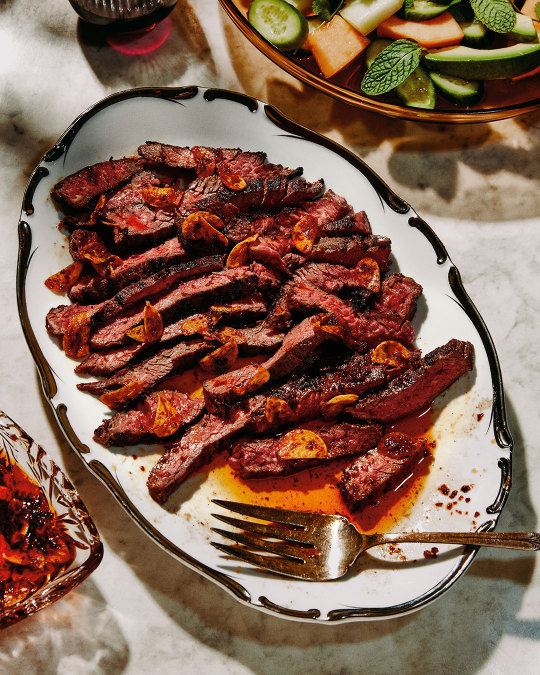
RECIPE: Lemongrass-Ginger Coconut Grilled Steak (from For The Table by Anna Stockwell)
Serves 6 to 8, recipe easily halved to serve 2 to 4 or doubled to serve 12 to 14
Gluten free & dairy free
3 pounds (1.4 kg) skirt steak, cut into 6-inch (15-cm) pieces
3 teaspoons kosher salt
1 cup (240 ml) coconut milk
1 stalk lemongrass, smashed and coarsely chopped
1 (3-inch/7.5-cm) piece ginger, peeled and finely chopped (3 tablespoons)
2 cloves garlic, crushed and coarsely chopped
1 teaspoon brown sugar
1 tablespoon fish sauce
Flaky sea salt, for serving
Season the steak on all sides with the salt and place in a baking dish.
In the jar of a blender or food processor, pulse the coconut milk, lemongrass, ginger, garlic, sugar, and fish sauce until as smooth as possible—it will never get totally smooth with all that tough lemongrass fiber, but that’s alright. Pour over the steak, turn to coat, and let sit at least 30 minutes and up to 1 hour. (You can make the marinade mixture up to 1 day in advance, just store it in the fridge and give it a good stir before pouring over your steak since the coconut fat may have separated and solidified.)
Prepare a grill for high-heat grilling. Grill the steak pieces, turning once halfway through, until deeply charred, 3 to 4 minutes per side. Let sit 10 minutes before slicing against the grain. Cutting the skirt steak against the grain is very important to make your eating experience pleasant, but the shape of a skirt steak is made to trick you. You might think you should cut it into strips crosswise, but think again: Turn your section of skirt steak so that the stripes of the grain go side to side in front of you instead of up and down, and then slice it into strips through those stripes, which will mean you’re cutting it lengthwise. You can also turn it on the diagonal and cut sort of lengthwise on a bias, as long as you’re cutting against the grain.
Assemble the sliced steak on a serving platter and drizzle lightly with Crispy Garlic and Chili Oil, if using, or just sprinkle it with flaky sea salt. You could also sprinkle it with some chile flakes if you want to add spice but didn’t get around to making the Crispy Garlic and Chili Oil.

Hosting a dinner party is a special kind of occasion. You welcome old and new friends into your home and gather around the table. You put out platters of food prepared just for that table of people, passing them around until everyone’s had their fill. This sense of sharing and togetherness feeds more than just bellies. It is what helps us stay connected, form new relationships, and build lasting bonds with our chosen families. During socially distanced times, the perfect dinner party might have felt like a lost art, but in For the Table, up-and-coming food writer Anna Stockwell provides all the tools needed for bringing back the ritual of hosting memorable yet modern dinner parties.
Stockwell has written a cookbook for a new way of entertaining that’s simpler, better, healthier, and more fun. Organized by season and full of helpful hosting advice, Stockwell provides accessible and modern menus; each is built around two large platters to pass around the table and includes suggestions for no-recipe side dishes. Dinner parties don't have to be formal or fussy, or even a lot of work, to be celebratory and gratifying. This book teaches you how to plan and prepare great-tasting and impressive-looking menus that are easy to pull off, as well as offers expert advice on toasts, prep-ahead strategies, and tips on handling guest lists and dietary restrictions. With its mix of innovative food presentation and old-fashioned, homestyle technique, For the Table is a testament to the art of the dinner party and looks forward to the festive dinner gatherings of the future.
For more information, click here.
#abramsbooks#abrams books#for the table#recipe#free recipe#anna stockwell#dinner party#host a dinner party#grilling#steak#steak recipe#grilling steak
7 notes
·
View notes
Photo

Hey guys!!! I finally opened pre-orders for my Fire Emblem bird tribe laguz charms!!
They are: → acrylic charms with an epoxy finish → 7.5 cm tall (~2.9") → double-sided with a transparent background
Pre-orders will be open from January 18th - 31st (two weeks!)
Please check my shop if interested!
✨ pidpigeon.bigcartel.com ✨
Thank you! 🦜
#fire emblem#tellius#por#rd#merch#reyson#leanne#naesala#janaff#tibarn#ulki#PHEW THESE SAT IN THE OVEN A WHILE!!!!#glad to finally get em out there!!
147 notes
·
View notes
Photo

One of Six Sheets of Paper (some double-sided) inscribed with Religious Texts, Poems, Charms, Kamakura period, datable to circa 1292, Harvard Art Museums: Calligraphy
Harvard Art Museums/Arthur M. Sackler Museum, Partial and promised gift of Walter C. Sedgwick in memory of Ellery Sedgwick Sr. and Ellery Sedgwick Jr. Size: max. H. 7.5 × W. 4.5 cm (2 15/16 × 1 3/4 in.) Medium: Ink on paper
https://www.harvardartmuseums.org/collections/object/362246
13 notes
·
View notes
Text
June 2021 Crate Reveals
We’re warming up the season with this month’s clubs! Check out what to expect in your June club crates.
Meet the yarns and our themes in this month’s full crate reveal on YouTube.
youtube
Knit & Crochet Club Theme
A yarn store glimmers in the distance. As you get closer, you can make out shades of green, blue, red, and gray – which one will be right for your next project? The good thing about this mirage, though, is that it doesn’t disappear as you get closer. All of the yarn is at your fingertips, ready to be knitted or crocheted into your next creation. As the desert sun slips beneath the horizon, make yourself a cozy scarf or shawl to keep away the cold as the wind blows across the sand. We know you’ll love this month’s yarn and projects that call to mind a beautiful desert mirage.

For our Knit & crochet club this month, we are featuring some of your favorite knit and crochet artists from Spain! Special thanks to Clara Mateo who helped us coordinate the designs for this month as well as shared her talented photography with us.
KnitCrate Knit & Crochet Club
This month’s yarn is the luxurious Vidalana Oasis, a mix of 50% Alpaca Wool, 25% Peruvian Highland/Merino Wool, and 25% Suri Alpaca. These three kinds of wool blend perfectly to create a yarn with beautiful drape that is oh-so-soft to the touch. Your crate comes with two matching skeins of DK weight yarn, each with 250 yds (229 m) / 100g. You won’t be able to resist including these silky-smooth fibers in your next project.
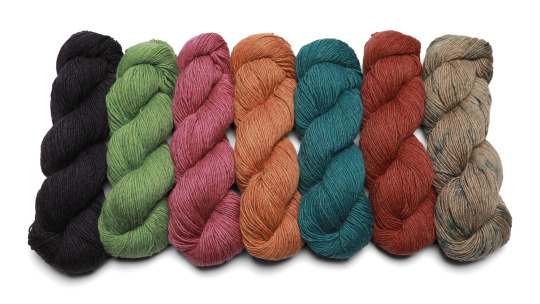
KnitCrate Knit & Crochet Club June 2021 Colorways
Members will receive 2 matching skeins in one of these 6 colorways.
Palm Springs: This soft mossy green, with yellow undertones, calls to mind a quiet desert oasis.
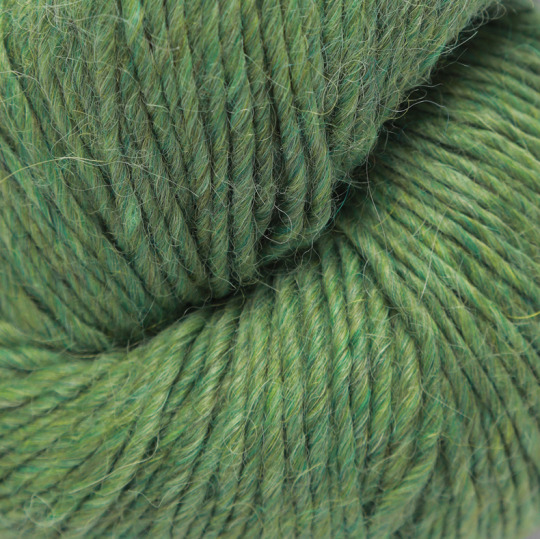
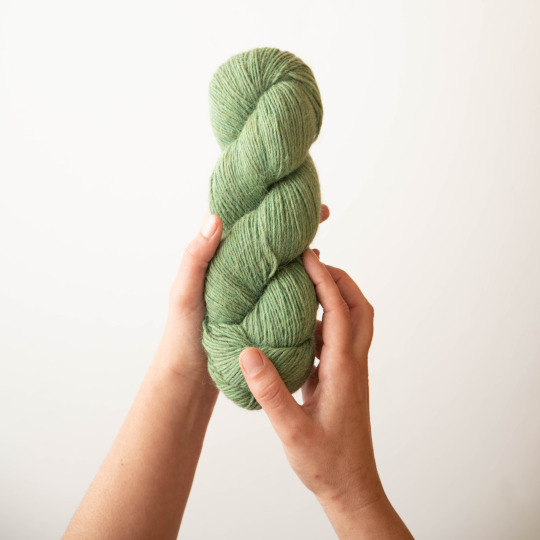
Casablanca: Enjoy the serene waters of a peaceful lake with this deep teal blue colorway, just like gazing upon the ocean from a patio in Casablanca.
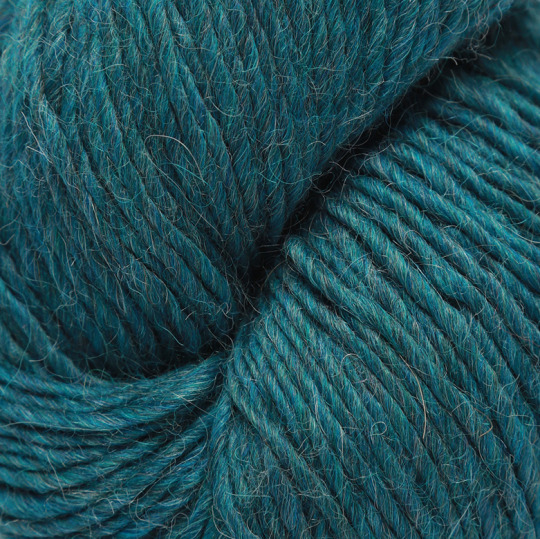
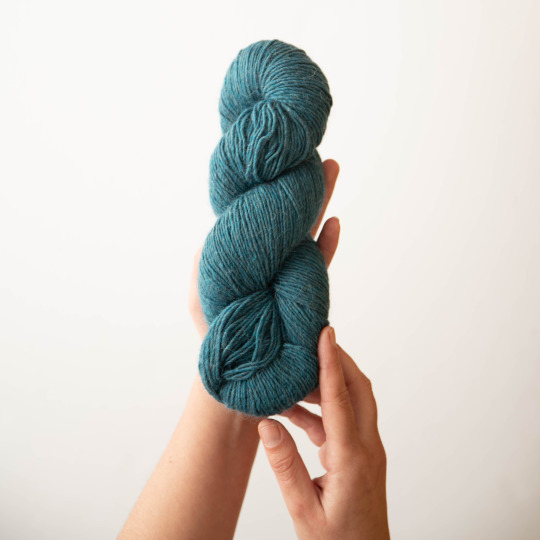
Sahara: The breathtaking colors of the Sahara shine through in this ginger colorway.
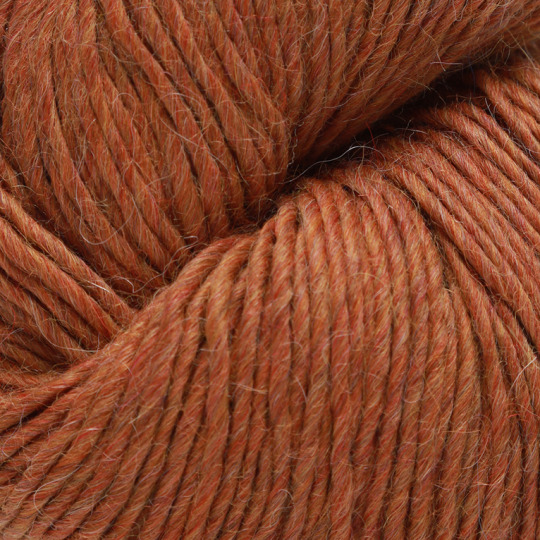
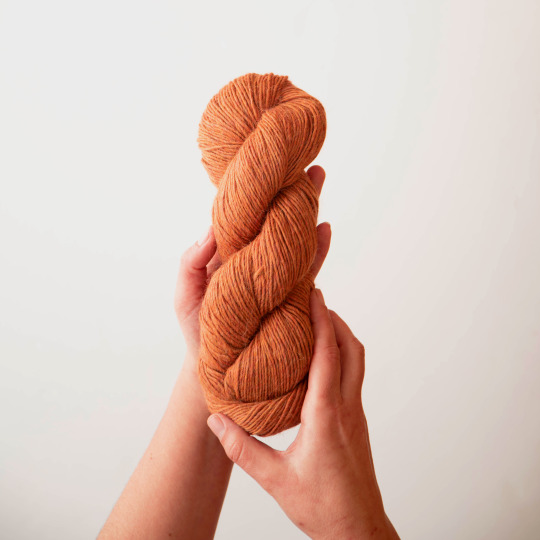
Morocco: Bring the beauty of a Moroccan sunset into your next project with this blushy pink-red yarn.
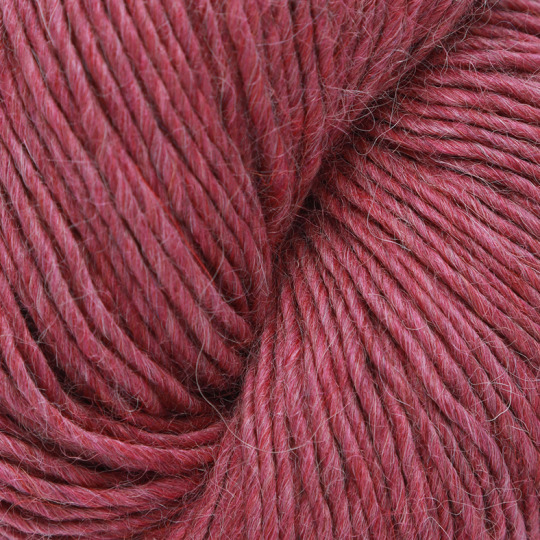
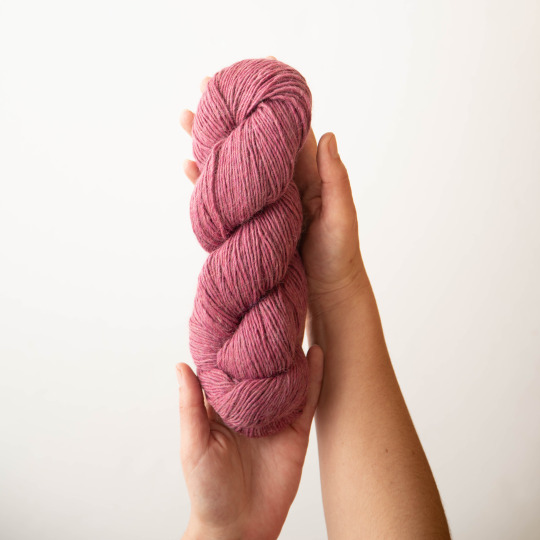
Tucson: This deep rusty red reminds us of old brick buildings and desert sunsets.
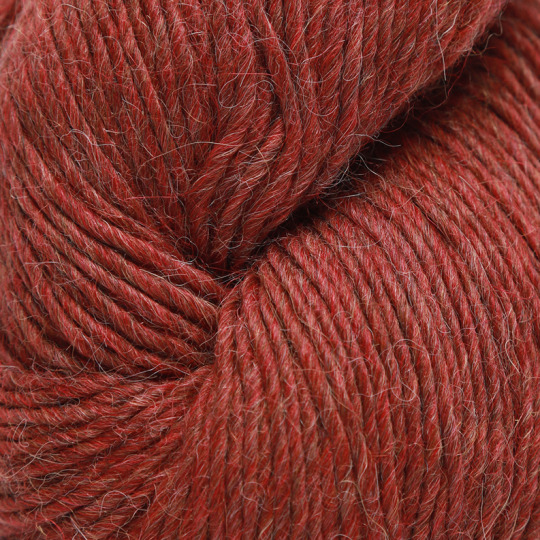
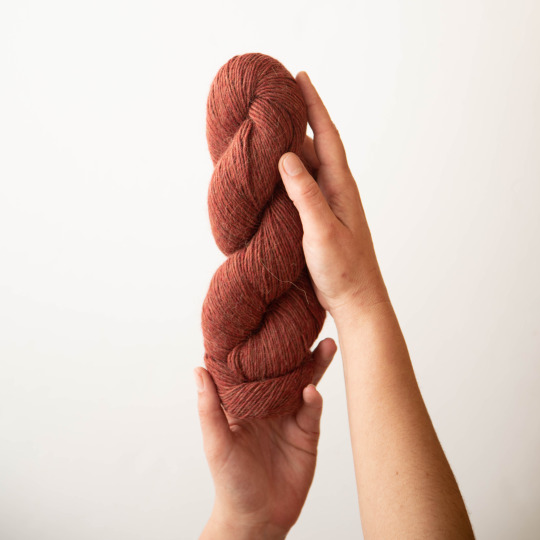
Nevada: The sun beats down upon the cobblestones in the warm taupe-and-gray skeins of Nevada that also include streaks of teal.
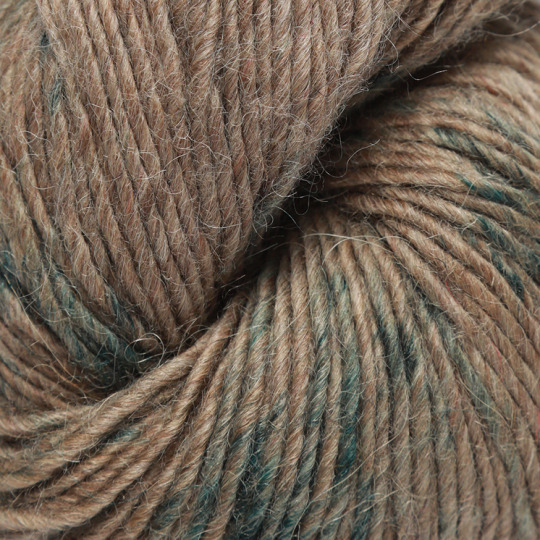
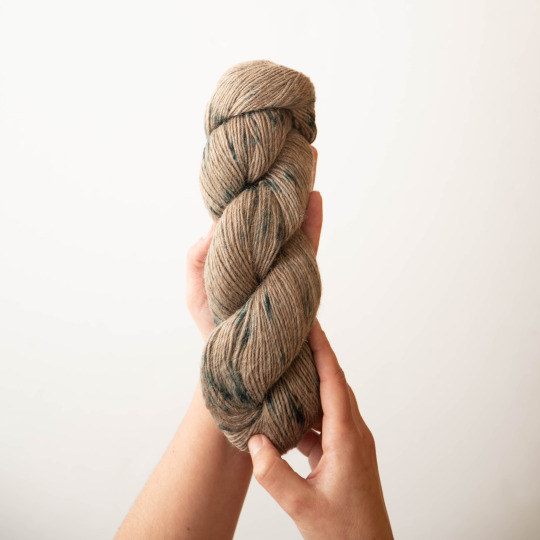
Phoenix: The understated beauty of this Phoenix colorway allows us to imagine the firebird rising from its deep purple-gray ashes.
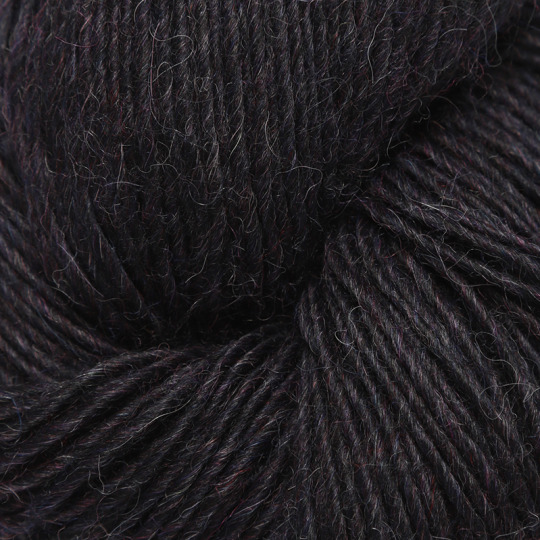
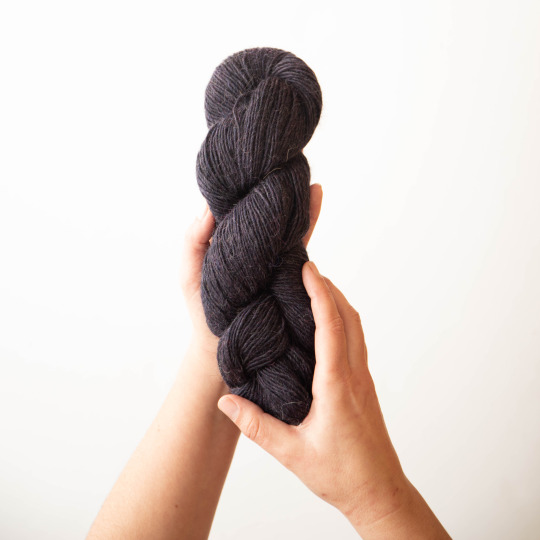
Knit & Crochet Club Patterns
Knit Pattern
Open lace defines the fabric of the Leaves and Soda shawl by Lola Logaro. Circular holes dance up and down the panels of this shawl, calling to mind the veins of a leaf. Despite the open pattern, this shawl will still keep you cozy on those cold days thanks to the warmth of the yarn. Dress up or dress down this project to go with any outfit you have in mind.
KNIT Pattern Details
Needles: US 8 (5 mm) circular needle, 23” (60 cm)
Yarn Needed: 468 yds (428 m) used / 2 skeins needed
Finished Size: 60” x 20” (150 x 50 cm)
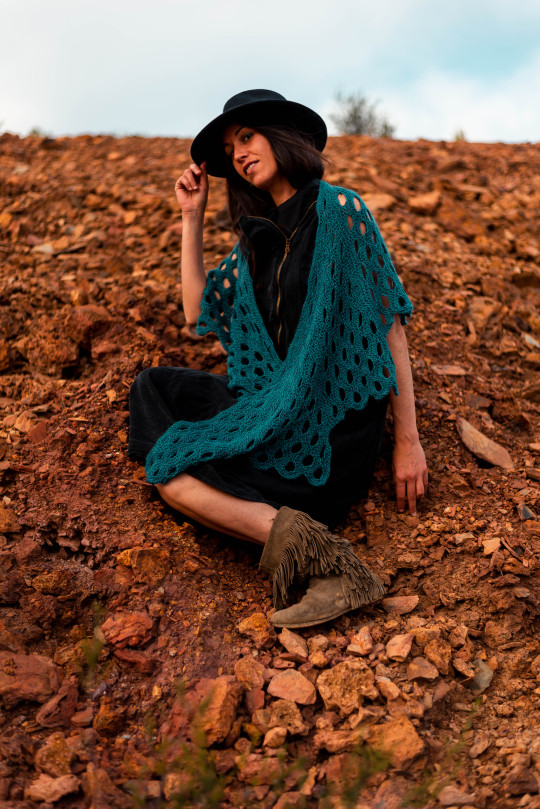
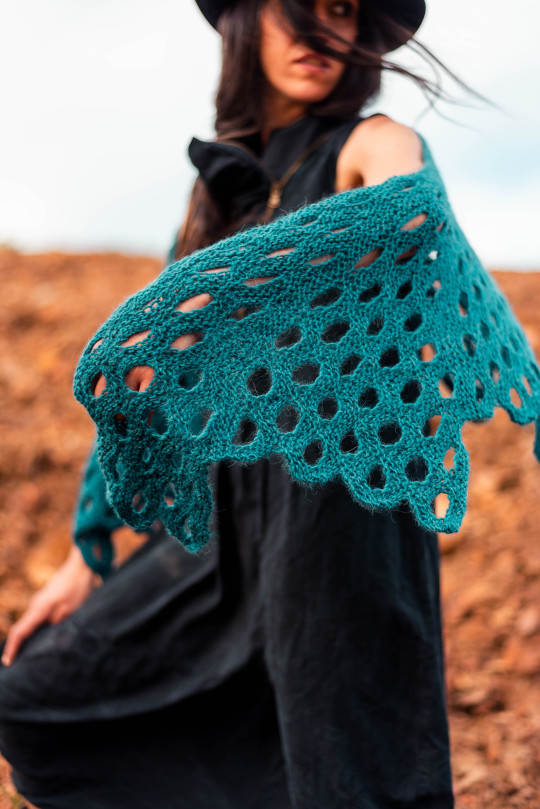
Crochet Pattern
Clusters climb along the lacy material of the Jackson Shawl by Laura Algarra. You’ll love working on this quick-to-stitch crochet shawl. Wear it loose around your shoulders or belted at the waist, depending on the look you’re after. Add fringe at both ends for the finishing touch that lends the shawl a beautiful sense of movement.
CROCHET Pattern Details
Crochet Hooks: US E/4 (3.5 mm)
Yarn Needed: 500 yds (460 m) used / 2 skeins needed
Notions: Tapestry needle
Finished Size: 63” long x 20” wide (160 cm long x 50 cm wide), blocked; Fringe adds 10” (25 cm) of length to both sides.
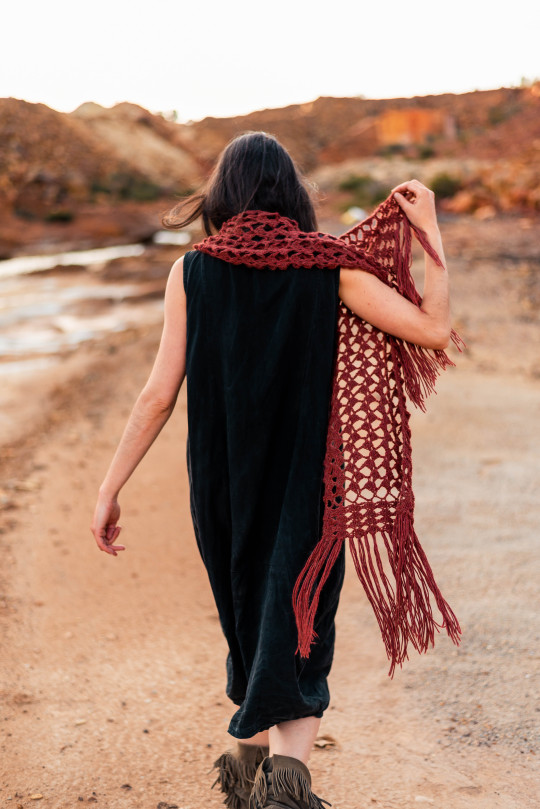
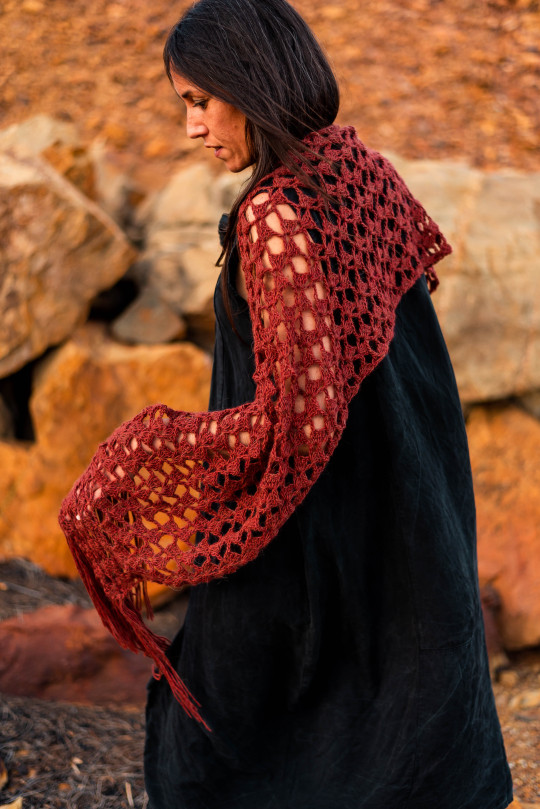
Not a member yet? Join today!
Sock Knit & Crochet Club Theme
Embrace the peace of nature with our Happy Little Skeins theme. This month we celebrate creating your own little world with a laid back positive energy. The colorways shared with our skeins this month would be welcome in any painted landscape.

Sock Knit & Crochet Club
All your sock-making needs are met in Knitologie Happy Little Sock. Your toes will stay cozy with this mix of 70% Superwash Merino Wool, 20% Tencel, and 10% Nylon. Each skein of fingering-weight yarn packs a whopping 400 yds (366 m) / 100g, enough to make a complete pair of squishy socks. Get ready to have the happiest feet in the forest!
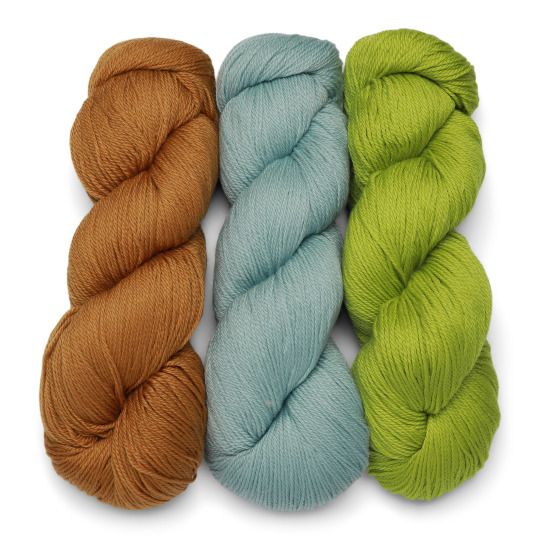
Sock Knit & Crochet Club Members will receive 1 skein in one of these 3 colorways.
Peapod: The invigorating green of Peapod brings the spring landscape directly to your next project, with a cheerful yellow undertone that is sure to brighten up your next pair of socks.
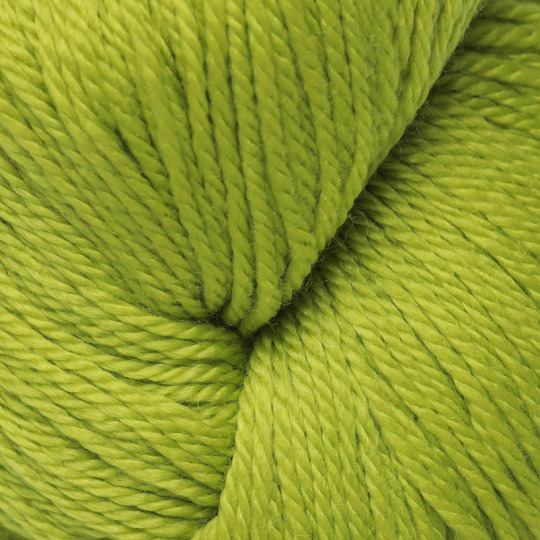
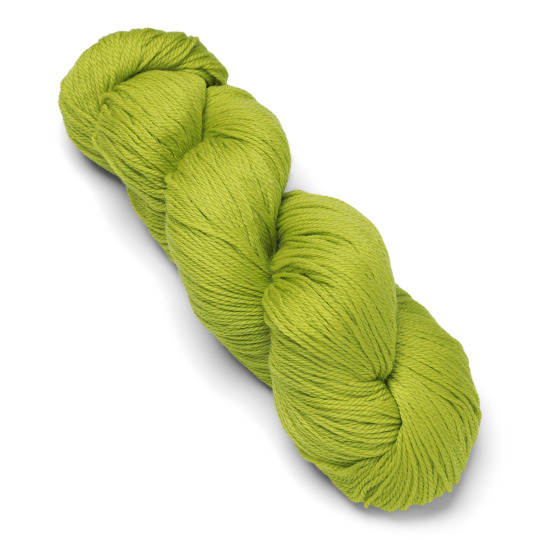
It’s Your Own Little World: Drift off into your own little world with this calming shade of soft blue. We can just imagine the happy clouds drifting across the peaceful blue sky.
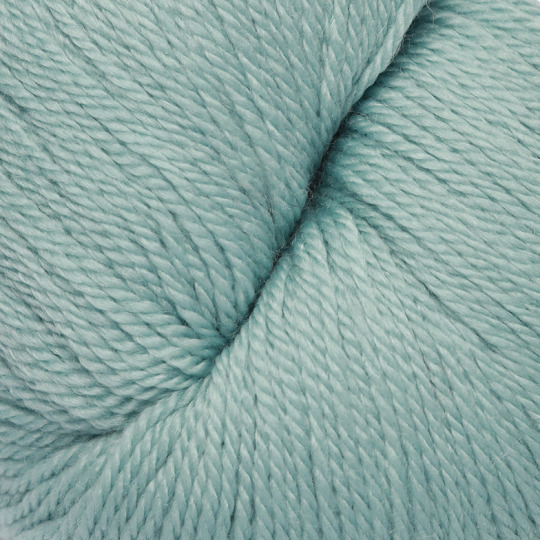
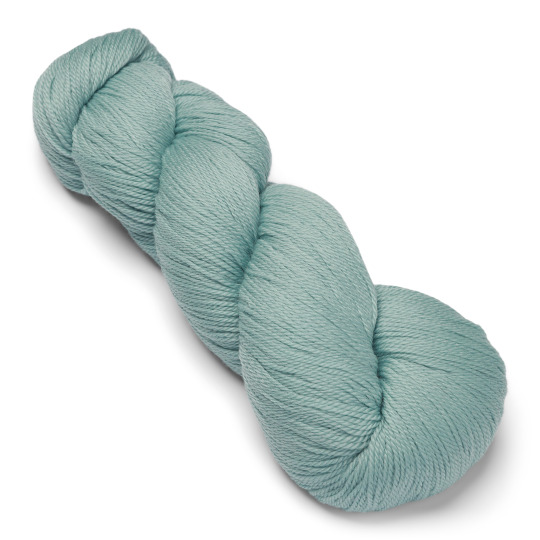
Every Tree Needs a Friend: This yarn will make you think of happy little trees with its warm shade of honey brown, perfect for bringing the beautiful colors of the forest into your next project.
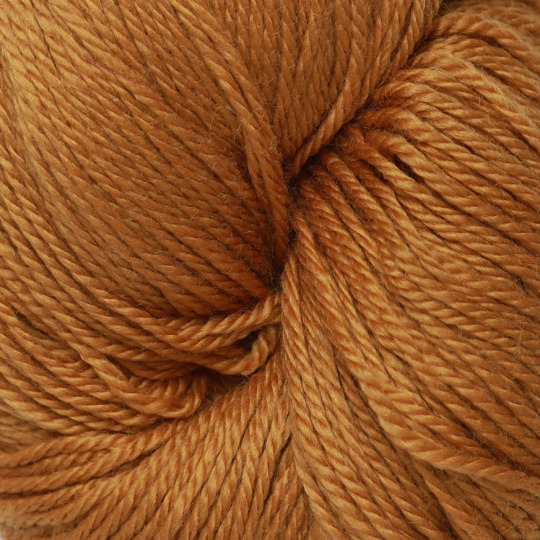
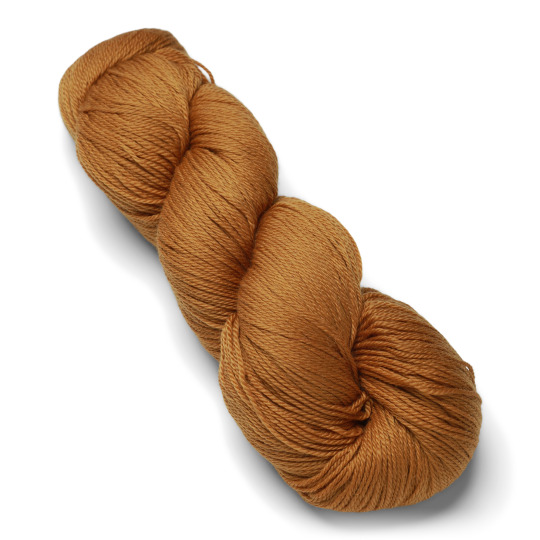
Sock Knit & Crochet Club Patterns
Knit Sock Pattern
Happy little pine trees twine their way across the fabric of these socks, perfect for strolling through the woods as you find a place to set up your easel. Brenda K. B. Anderson designed these Happy Little Tree Socks that perfectly highlight this month’s sock yarn. Complete with charts to help you understand the traveling stitches, these socks are the perfect project to keep you nice and toasty warm as well as fashionable at the same time.
KNIT Sock Pattern Details
Needles: US 1 (2.25 mm) set of 4 dpns
Yarn Needed: Approx yarn amounts: 210 (240, 270, 300, 330) meters, exact yarn amounts will vary depending on foot length / 1 skein needed for each size
Notions: stitch markers (3), tapestry needle
Finished Leg Circumference: 5.5 (6.5, 7.5, 8.75, 9.75)” / 14 (16.5, 19, 22, 25) cm, unstretched
Finished Foot Circumference: 6 (7, 8, 9, 10)” / 15 (18, 20.5, 23, 25.5) cm
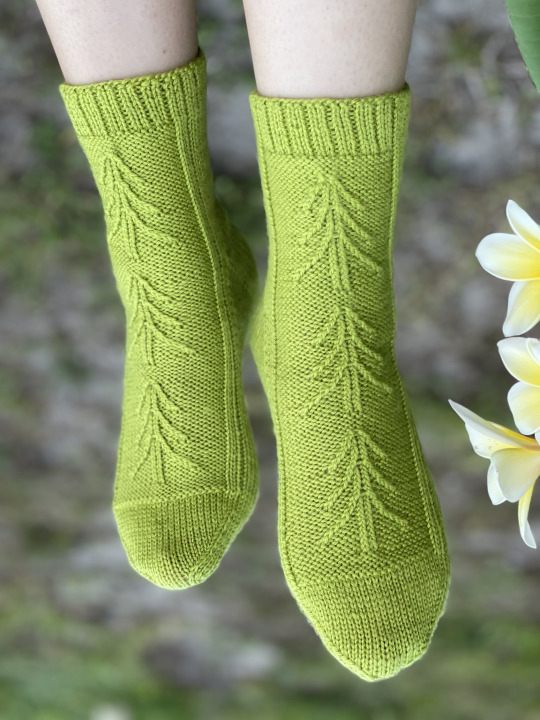
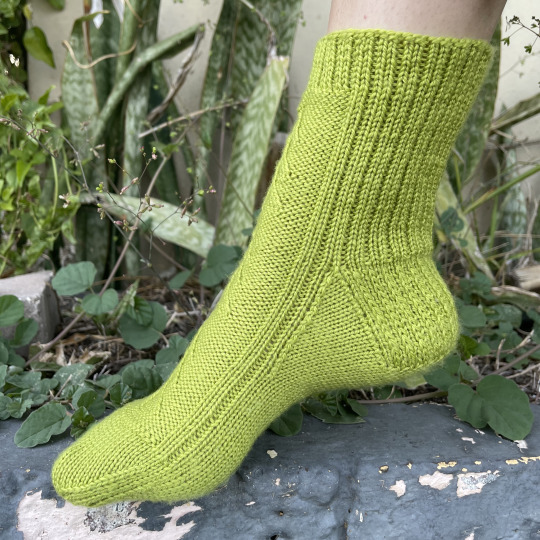
Crochet Sock Pattern
The Sidelined Socks by Rohn Strong utilize two beautiful textures to create a sock you’ll want to wear every day, from crafting on the couch to a walk in the woods. The ankle-length silhouette features a basic extended single crochet in the foot that transitions into a vertically-worked cuff of crossed double crochet at the back of the leg and perfectly highlights the colors of this month’s yarn.
CROCHET Sock Pattern Details
Crochet Hooks: US D/3.25mm
Yarn Needed: 197 (222, 300, 328, 399, 429) yds (180 (203, 274, 300, 365, 392) m) used / 1 (1, 1, 1, 1, 2) skeins needed
Notions: Tapestry Needle, stitch marker (1)
Finished Leg Length: 4”/ 10 cm
Finished Foot Circumference: 6 (6.75, 8, 8.75, 10, 10.75)” / 15 (17, 20, 22, 25, 27) cm
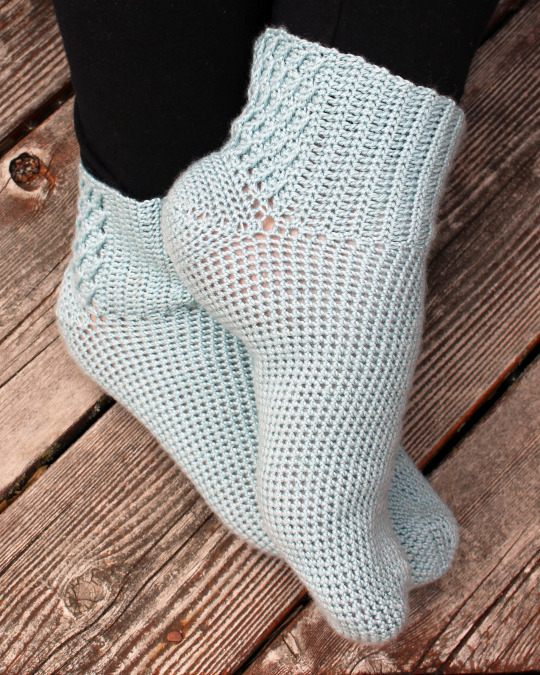
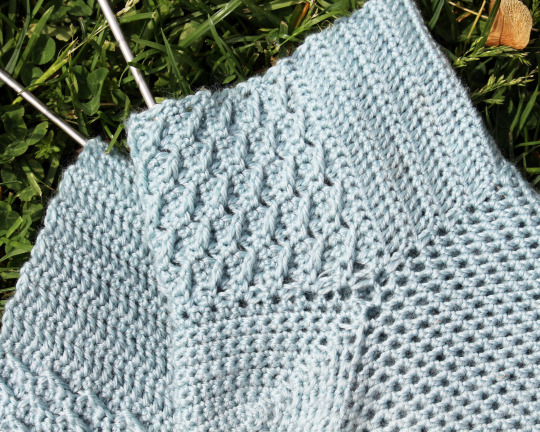
#knitcrate#knit#knitter#knitting#knitters#knittersoftheworld#knittersgonnaknit#knittersofig#knitterslife#crochet#crocheting#crocheters#crocheter#crochetersgonnacrochet#crochetersofinstagram#crochetersofravelry#yarn#yarnsubscription
14 notes
·
View notes
Text

• Hotchkiss H35
The Hotchkiss H35 or Char léger modèle 1935 H was a French cavalry tank developed prior to World War II. The Hotchkiss H35 was adopted in 1936 by the French Cavalry arm.
In 1926, it had been decided to provide armour support to the regular infantry divisions by creating autonomous tank battalions equipped with a light and cheap infantry tank, a char d'accompagnement. In 1933, the Hotchkiss company under its own initiative presented a plan to produce a design. This was made possible by the application of a new technology to produce cast steel sections to construct an entire hull. On June 30th, 1933, this proposal was approved by the Conseil Consultatif de l'Armement. On August 2nd, 1933 the specifications were issued: a weight of 6 long tons (6.1 t) and 30 mm (1.2 in) armour protection all around. Three prototypes were ordered from Hotchkiss, but the French industry as a whole was also invited to provide alternative proposals for a nouveau char léger. On January 18th, 1935, the first Hotchkiss prototype, not yet made of armour steel, was presented to the Commission d'Expérience du Matériel Automobile (CEMA) at Vincennes; it was a machine gun-armed tankette without turret. It was tested until 4 March 1935, when it was replaced by the second identical prototype to be tested until May 6th. Both had to be rejected because new specifications had been made on June 21st, 1934 that increased the desired armour thickness to 40 mm (1.6 in).
On August 19th, the third prototype was delivered, equipped with a cast APX turret and featuring a redesigned hull; it was tested until September 20th and accepted. On November 6th, 1935 a first order was made for 200 vehicles. Though it should have been completed between July 1936 and July 1937, the first production vehicle was in fact delivered on September 12th, 1936. A first additional orders had already been made of 92 on September 7th, 1936, to be completed in November 1937. A third one of 108 vehicles followed in January 1937, to be completed in September 1938. By January 1st, 1937 132 hulls had been produced. None of these had at that date yet been fitted with a turret. The first series vehicle was again extensively and intensively tested until 4 December 1936. The testing soon showed that its cross-country handling qualities were unacceptably poor. It was simply impossible to safely steer the vehicle on a somewhat bumpy surface, posing an extreme danger to nearby friendly infantry. The Infantry therefore initially rejected any further procurement. Eventually, in 1937, it decided to accept only the last hundred tanks to equip just two battalions with the type. For political reasons however, stopping production of the tank was unacceptable. As a result the first three hundred vehicles of the production run were offered to the Cavalry, which was forced to accept them because it would not have been granted a budget for other tanks anyway. The H 35 was, at 28 km/h (17 mph), also somewhat faster than the Renault R35, which was capable of 20 km/h (12 mph), although in practice its average speed was lower than that of the R 35 because of its inferior gear box.
The Hotchkiss H35 was a small vehicle, 4.22 m (13.8 ft) long, 1.95 m (6.4 ft) wide and 2.133 m (7.00 ft) tall and weighing 10.6–11.37 t (10.43–11.19 long tons). The hull consisted of six cast armour sections, bolted together: the engine deck, the fighting compartment, the front of the hull, the back of the hull and two longitudinal sections left and right forming the bottom. The hull was made water-tight by cementing these sections together with Aslic, a product based on tar mixed with lime. The casting allowed for sloped armour, avoiding shot traps, to optimise the chance of deflection but the protection levels did not satisfy the Infantry. Maximum armour thickness was not the specified 40 mm (1.6 in) but 34 mm (1.3 in). There were persistent quality problems, worsened by the fact that many subcontractors had to be used: at first the armour was made much too soft; when hardness was increased it became brittle and hence developed weak spots. There was a crew of two. The driver sat at the right front, behind a large cast double hatch and next to the combined gearbox and steering unit. Behind him was a round escape hatch in the bottom of the hull. Driving the vehicle was very hard work. The Hotchkiss lacked the Cleveland differential ("Cletrac") of its Renault competitor, and it responded unpredictably to changes of direction. The brakes could not sufficiently compensate for this, being too weak, especially when driving down-slope.
No less troublesome was the gearbox: it was difficult to engage the highest fifth gear and so the theoretical top speed of 27.8 km/h (17.3 mph) was rarely reached. There was one reverse gear. The inevitable rough handling of the tank by the driver resulted in much wear and tear. Mechanical reliability was poor. The suspension consisted of three bogies per side—each formed of two bell cranks arranged as "scissors" with springs at the top. Each bogie carried two rubber-rimmed wheels. The bogies superficially resembled the R35 type, but used horizontal helical springs instead of rubber cylinders. The sprocket was at the front, the idler which itself was sprung to automatically control tension at the rear. There were two top rollers. The tank was powered by a 78 hp six-cylinder 86 x 100 3485 cc engine which was on the left of the engine compartment. A 160-litre fuel tank on the right, combined with a twenty litres reserve reservoir, gave a range of 129 km (80 mi) or eight hours on a varied terrain. Also a cooling fan drew air through the radiator and was also expected to cool the fuel tank. The trench-crossing capacity was 1.8 m (5.9 ft), the wading capacity 85 cm (33 in). The APX-R turret was the same standard type as used on the R35 and R40 tanks, made of 40 mm (1.6 in) cast steel and armed with the short 37 mm SA 18 gun, which had a maximum armour penetration of only 23 mm (0.91 in). Traverse of the turret was with a handwheel. The commander sat in a saddle suspended from the turret. The tank carried about 100 rounds for the gun, and 2,400 rounds for the coaxial 7.5 mm Reibel machine gun – the 37 mm ammunition racked on the left hand side of the hull, the 7.5 mm ammunition on the right side in fifteen circular magazines with 150 rounds each; a final magazine was to be at the ready on the machine-gun itself.
For access there was a hatch at the back of the turret. When opened, the commander could sit on it for better observation, but this left him very vulnerable and slow to reach the gun. The alternative was to fight closed-up, observing through the vertical slits or the visor of the hatchless cupola. The Cavalry liked neither this arrangement nor the weak gun. The latter problem was lessened somewhat by enlarging the breech so that special rounds with a larger charge could be used. This increased muzzle velocity to about 600 m/s (2,000 ft/s) and maximum penetration to about 30 mm (1.2 in). In the Spring of 1940 the original diascopes of the Chrétien type were gradually replaced with episcopes, offering more protection.
In the Cavalry arm, the main user at first, the Hotchkiss tanks replaced as main combat tanks the light AMR 33 and AMR 35 vehicles, that for want of a better type had been used to form the bulk of the first two Cavalry armoured divisions. As the new medium SOMUA S35 was initially produced in very limited numbers, until early 1939 the Hotchkiss equipped three of the four divisional tank regiments. In April 1940 the 342e CACC (Compagnie Autonome de Chars de Combat or "Independent Tank Company") was sent to Norway after Operation Weserübung, the German invasion of that country, having first been intended to form part of an expeditionary force to assist Finland in the Winter War. This autonomous company, equipped with fifteen Char léger modèle 1935 H modifié 39, all with short guns, fought in the later phase of the Battles of Narvik, after having landed on May 7th. According to the official army acceptance lists, at the start of World War II 640 Hotchkiss tanks had been delivered. The inventories deviate slightly: of the 300 H35s allocated to the Cavalry, 232 were fielded by ten cavalry squadrons, 44 were in depot, eight in factory overhaul and sixteen in North Africa. Of the H39s, sixteen were used by the Cavalry in North Africa and six in depot; 180 were fielded by four Infantry tank battalions and fourteen were in the Infantry matériel reserve. It was decided to concentrate most Allied production capacity for light tanks into the manufacture of a single type, and the Hotchkiss tank was chosen as it had the necessary mobility to be of use in the many armoured divisions the Entente planned to raise for the expected decisive summer offensive of 1941. To this end British and Portuguese heavy industry had to assist in producing the cast armour sections. It was hoped to increase production to 300 a month in October 1940, and even 500 a month from March 1941, the sections of 75 of which to be provided by Britain in exchange for a monthly delivery of nine Char B1s.
These plans were disrupted by the Battle of France. In May 1940 the type equipped in the Cavalry units two tank regiments (of 47) in each of the three Mechanised Light Divisions and served as AMR in the 9th and 25th Mechanised Infantry Division. Furthermore, sixteen vehicles were part of the 1er RCA in Morocco. In the Infantry it equipped the two autonomous battalions mentioned above and two battalions of 45 in each of the three Divisions Cuirassées, the latter with the H39 variant. Most Hotchkiss tanks were thus concentrated in larger motorised units, in the armoured divisions supplementing the core of heavier tanks, though they were mismatched. Following the French defeat in the Battle of France about 550 Hotchkiss tanks were captured and used by the Germans as Panzerkampfwagen 35H 734(f) or Panzerkampfwagen 38H 735(f); most for occupation duty. Like the French, the Germans made no clear distinction between a H38 and a H39; and fitted many with a cupola with a hatch. Panzer-Abteilung 211 was deployed in Finland during Operation Barbarossa, equipped with Hotchkiss tanks. In 1944, three of its vehicles were converted to 7.5 cm self-propelled guns. German H35/39s also saw action in Yugoslavia with 7.SS-Freiwilligen-Gebirgs-Division "Prinz Eugen", 12. Panzer-Kompanie z.b.V. and I./Panzer-Regiment 202. In 1942 a project was launched to make use of French equipment as carrier platforms for heavier guns, directed by Major Alfred Becker, an artillery officer who was a mechanical engineer by trade. He had experience making similar conversions with captured Belgian and British vehicles. Some vehicles were modified into munition carriers or artillery tractors (Artillerieschlepper 38H(f)) or rocket-launchers (Panzerkampfwagen 35H(f) mit 28/32 cm Wurfrahmen). In June 1943, 361 Hotchkiss tanks were still listed in the German Army inventories as 37 mm gun tanks; this number had decreased to sixty in December 1944.
Three Hotchkiss tanks of the "H39" version had been exported by France to Poland in July 1939 for testing by the Polish Bureau of Technical Studies of Armoured Weapons, with a view to a larger purchase. During the German invasion of Poland in 1939 the Hotchkiss tanks, together with three Renault R 35 tanks, were organised into an ad hoc "half company" unit under lieutenant J. Jakubowicz, formed on September 14th, 1939 in Kiwerce, Poland. The unit joined the "Dubno" task force and lost all of its tanks during the marches and fighting against German and Soviet armies, due to fuel shortages. In North Africa, 27 vehicles (thirteen H35 and fourteen H39) were officially serving in the 1e Régiment de Chasseurs d'Afrique and were allowed to remain there by the armistice conditions; another five were hidden in Morocco. They fought the Allies during the opening stages of Operation Torch, the Allied invasion of French North Africa, near Casablanca in November 1942, destroying four M3 Stuart light tanks. The regiment then joined the allied cause and was re-equipped with M4 Sherman medium tanks in the summer of 1943. After the war, some Hotchkiss tanks were used by French security forces in the colonies, such as French Indochina, and occupation forces in Germany. Ten H39s were clandestinely sold to Israel, they were shipped from Marseilles to Haifa in 1948.
One Hotchkiss H35 and nine Hotchkiss H35s modifié 39 have survived to this present day, all of the modifié 39 were further modified by the Germans during World War II.
#second world war#world war 2#world war ii#french history#french tanks#tank history#tank warfare#tanks#military equipment#military history#ww2#wwii
93 notes
·
View notes
Note
Panzer IV The Panzerkampfwagen IV (Pz.Kpfw. IV), commonly known as the Panzer IV, was a German medium tank developed in the late 1930s and used extensively during the Second World War. Its ordnance inventory designation was Sd.Kfz. 161. Panzerkampfwagen IV Sd.Kfz. 161/VK 622 (Ausf. A) Panzermuseum Munster 2010 0128.JPG A Panzer IV Ausf. G "413" in desert colours, bearing the palm tree insignia of the Afrika Korps, "Friederike" script written on the gun barrel near the mantlet. This tank was on display at the Deutsches Panzermuseum. Type Medium tank Place of origin Nazi Germany Service history In service 1939–1945 (Nazi Germany) 1954[1]–1967 (Syria) Used by Nazi Germany Romania Turkey Hungary Bulgaria Italy Finland Spain Croatia Syria Wars World War II, 1948 Arab–Israeli War, Six-Day War Production history Designer Krupp Designed 1936 Manufacturer Krupp, Vomag, Nibelungenwerk Unit cost ≈103,462 Reichsmarks and 115,962 Reichmarks With 7,5 cm KwK 40 (L/43)[2] Produced 1936–1945 No. built ≈8,553 of all tank variants[3] Variants StuG IV, Jagdpanzer IV, Brummbär/Sturmpanzer IV, Nashorn, Wirbelwind, Ostwind Specifications (Pz. IV Ausf. H, 1943[5]) Mass 25.0 tonnes (27.6 short tons; 24.6 long tons) Length 5.92 metres (19 ft 5 in) 7.02 metres (23 ft 0 in) gun forward Width 2.88 m (9 ft 5 in) Height 2.68 m (8 ft 10 in) Crew 5 (commander, gunner, loader, driver, radio operator/bow machine-gunner) Armor Hull front: 80 mm (3.1 in) Hull side (upper and lower): 30 mm (1.2 in) Hull rear (upper and lower): 20 mm (0.79 in) Hull roof and floor: 10 mm (0.39 in) Schürzen: 5 mm (0.20 in) to 8 mm (0.31 in)[4] Turret front: 50 mm (2.0 in) Turret side and rear: 30 mm (1.2 in) Turret roof: 10 mm (0.39 in) Main armament 7.5 cm (2.95 in) KwK 40 L/48 main gun (87 rounds) Secondary armament 2 × 7.92 mm MG 34 machine guns (3,150 rounds) Engine Maybach HL120 TRM 12-cylinder gasoline engine 300 PS (296 hp, 220 kW) Power/weight 12 PS (8.8 kW) / tonne Transmission (Synchromesh ZF SSG 77) 6 forward and 1 reverse ratios Suspension Leaf spring Fuel capacity 470 l (120 US gal) Operational range 200 km (120 mi) Maximum speed 38 to 42 km/h (24 to 26 mph) maximum, 25 km/h (16 mph) max sustained road speed 16 km/h (9.9 mph) off road The Panzer IV was the most numerous German tank and the second-most numerous German armored fighting vehicle of the Second World War, with some 8,500 built. Its chassis was also used as the base for many other fighting vehicles, including the Sturmgeschütz IV assault gun, the Jagdpanzer IV tank destroyer, the Wirbelwind self-propelled anti-aircraft gun, and the Brummbär self-propelled gun. The Panzer IV saw service in all combat theaters involving Germany and was the only German tank to remain in continuous production throughout the war. It was originally designed for infantry support, while the similar Panzer III was to fight armoured fighting vehicles. However as the Germans faced the formidable T-34, the Panzer IV had more development potential, with a larger turret ring to mount more powerful guns, so the two switched roles. It received various upgrades and design modifications, intended to counter new threats, extending its service life. Generally, these involved increasing the armor protection or upgrading the weapons, although during the last months of the war, with Germany's pressing need for rapid replacement of losses, design changes also included simplifications to speed up the manufacturing process. The Panzer IV was partially succeeded by the Panther medium tank, which was introduced to counter the Soviet T-34, although it continued to be a significant component of German armoured formations to the end of the war. It was the most widely exported tank in German service, with around 300 sold to Finland, Romania, Spain and Bulgaria. After the war, Syria procured Panzer IVs from France and Czechoslovakia, which saw combat in the 1967 Six-Day War. 8,553 Panzer IVs of all versions were built during World War II, a production run in Axis forces only exceeded by the StuG III assault gun with 10,086
vehicles. Development history Origins The Panzer IV was the brainchild of the German general and innovative armored warfare theorist Heinz Guderian.[6] In concept, it was intended to be a support tank for use against enemy anti-tank guns and fortifications.[7] Ideally, each tank battalion in a panzer division was to have three medium companies of Panzer IIIs and one heavy company of Panzer IVs.[8] On 11 January 1934, the German army wrote the specifications for a "medium tractor", and issued them to a number of defense companies. To support the Panzer III, which would be armed with a 37-millimetre (1.46 in) anti-tank gun, the new vehicle would have a short-barreled, howitzer-like 75-millimetre (2.95 in) as its main gun, and was allotted a weight limit of 24 tonnes (26.46 short tons). Development was carried out under the name Begleitwagen ("accompanying vehicle"),[9] or BW, to disguise its actual purpose, given that Germany was still theoretically bound by the Treaty of Versailles ban on tanks.[10] MAN, Krupp, and Rheinmetall-Borsig each developed prototypes,[8] with Krupp's being selected for further development.[11] The chassis had originally been designed with a six-wheeled Schachtellaufwerk interleaved-roadwheel suspension (as already adopted for German half-tracks), but the German Army amended this to a torsion bar system. Permitting greater vertical deflection of the roadwheels, this was intended to improve performance and crew comfort both on- and off-road.[11][12] However, due to the urgent requirement for the new tank, neither proposal was adopted, and Krupp instead equipped it with a simple leaf spring double-bogie suspension, with eight rubber-rimmed roadwheels per side. The prototype had a crew of five; the hull contained the engine bay to the rear, with the driver and radio operator, who doubled as the hull machine gunner, seated at the front-left and front-right, respectively. In the turret, the tank commander sat beneath his roof hatch, while the gunner was situated to the left of the gun breech and the loader to the right. The torque shaft ran from the rear engine to the transmission box in the front hull between the driver and radio operator. To keep the shaft clear of the rotary base junction, which provided electrical power to the turret including the motor to turn it, the turret was offset 66.5 mm (2.62 in) to the left of the chassis center line, and the engine was moved 152.4 mm (6.00 in) to the right. Due to the asymmetric layout, the right side of the tank contained the bulk of its stowage volume, which was taken up by ready-use ammunition lockers.[11] Accepted into service under the designation Versuchskraftfahrzeug 622 (Vs.Kfz. 622), "experimental motor vehicle 622",[10] production began in 1936 at Fried. Krupp Grusonwerk AG factory at Magdeburg.[13] Ausf. A to Ausf. F1 Panzer IV Ausf. A in 1939 Panzer IV Ausf. C 1943 The first mass-produced version of the Panzer IV was the Ausführung A (abbreviated to Ausf. A, meaning "Variant A"), in 1936. It was powered by a Maybach HL108 TR, producing 250 PS (183.87 kW), and used the SGR 75 transmission with five forward gears and one reverse,[14] achieving a maximum road speed of 31 kilometres per hour (19.26 mph).[15] As main armament, the vehicle mounted the short-barreled, howitzer-like 75 mm (2.95 in) Kampfwagenkanone 37 L/24 (7.5 cm KwK 37 L/24) tank gun, which was a low-velocity weapon mainly designed to fire high-explosive shells.[16] Against armored targets, firing the Panzergranate (armor-piercing shell) at 430 metres per second (1,410 ft/s) the KwK 37 could penetrate 43 millimetres (1.69 in), inclined at 30 degrees, at ranges of up to 700 metres (2,300 ft).[17] A 7.92 mm (0.31 in) MG 34 machine gun was mounted coaxially with the main weapon in the turret, while a second machine gun of the same type was mounted in the front plate of the hull.[11] The main weapon and coaxial machine gun were sighted with a Turmzielfernrohr 5b optic while the hull machine gun was sighted with a Kugelzielfernrohr 2 optic.[18] The Ausf. A was protected by
14.5 mm (0.57 in) of steel armor on the front plate of the chassis, and 20 mm (0.79 in) on the turret. This was only capable of stopping artillery fragments, small-arms fire, and light anti-tank projectiles.[19] A total of 35 A versions were produced.[10] The 300 horsepower Maybach HL 120TRM engine used in most Panzer IV production models. PzKpfw IV Ausf. D In 1937 production moved to the Ausf. B.[10] Improvements included the replacement of the original engine with the more powerful 300 PS (220.65 kW) Maybach HL 120TR, and the transmission with the new SSG 75 transmission, with six forward gears and one reverse gear. Despite a weight increase to 16 t (18 short tons), this improved the tank's speed to 42 kilometres per hour (26.10 mph).[20] The glacis plate was augmented to a maximum thickness of 30 millimetres (1.18 in),[19] while a new driver's visor was installed on the straightened hull front plate, and the hull-mounted machine gun was replaced by a covered pistol port and visor flap.[20] The superstructure width and ammunition stowage were reduced to save weight.[20] A new commander's cupola was introduced which was adopted from the Panzer III Ausf. C.[20] A Nebelkerzenabwurfvorrichtung (smoke grenade discharger rack) was mounted on the rear of the hull starting in July 1938[20] and was back fitted to earlier Ausf. A and Ausf. B chassis starting in August 1938.[21] Forty-two Panzer IV Ausf. Bs were manufactured.[10] The Ausf. C replaced the B in 1938.[10][22] This saw the turret armor increased to 30 mm (1.18 in), which brought the tank's weight to 18.14 t (20.00 short tons).[22] After assembling 40 Ausf. Cs, starting with chassis number 80341, the engine was replaced with the improved HL 120TRM. The last of the 140 Ausf. Cs was produced in August 1939. Production changed to the Ausf. D; this variant, of which 248 vehicles were produced, reintroduced the hull machine gun and changed the turret's internal gun mantlet to a 35 mm (1.38 in)[23] thick external mantlet.[22] Again, protection was upgraded, this time by increasing side armor to 20 mm (0.79 in).[16] As the German invasion of Poland in September 1939 came to an end, it was decided to scale up production of the Panzer IV, which was adopted for general use on 27 September 1939 as the Sonderkraftfahrzeug 161 (Sd.Kfz. 161).[10] In response to the difficulty of penetrating the thick armor of British infantry tanks (Matilda and Matilda II) during the Battle of France, the Germans had tested a 50 mm (1.97 in) gun — based on the 5 cm Pak 38 anti-tank gun — on a Panzer IV Ausf. D. However, with the rapid German victory in France, the original order of 80 tanks was cancelled before they entered production.[24] In October 1940, the Ausf. E was introduced. This had 30 millimetres (1.18 in) of armor on the bow plate, while a 30-millimetre (1.18 in) appliqué steel plate was added to the glacis as an interim measure. A new driver's visor, adopted from the Sturmgeschütz III was installed on the hull front plate.[25] A new commander's cupola, adopted from the Panzer III Ausf. G, was relocated forward on the turret eliminating the bulge underneath the cupola.[26] Older model Panzer IV tanks were retrofitted with these features when returned to the manufacturer for servicing. 206 Ausf. Es were produced between October 1940 and April 1941.[3] The short-barreled Panzer IV Ausf. F1. In April 1941, production of the Panzer IV Ausf. F started. It featured 50 mm (1.97 in) single-plate armor on the turret and hull, as opposed to the appliqué armor added to the Ausf. E,[22] and a further increase in side armor to 30 mm (1.18 in).[27] The main engine exhaust muffler was shortened and a compact auxiliary generator muffler was mounted to its left.[25] The weight of the vehicle was now 22.3 tonnes (24.6 short tons), which required a corresponding modification of track width from 380 to 400 mm (14.96 to 15.75 in) to reduce ground pressure. The wider tracks also facilitated the fitting of track shoe "ice sprags", and the rear idler wheel and front sprocket were modified.[28] The
designation Ausf. F was changed in the meantime to Ausf. F1, after the distinct new model, the Ausf. F2, appeared. A total of 471 Ausf. F (later temporarily called F1) tanks were produced from April 1941 to March 1942.[3] Ausf. F2 to Ausf. J On 26 May 1941, mere weeks before Operation Barbarossa, during a conference with Hitler, it was decided to improve the Panzer IV's main armament. Krupp was awarded the contract to integrate again the 50 mm (1.97 in) Pak 38 L/60 gun into the turret. The first prototype was to be delivered by 15 November 1941.[29] Within months, the shock of encountering the Soviet T-34 medium and KV-1 heavy tanks necessitated a new, much more powerful tank gun.[30] In November 1941, the decision to up-gun the Panzer IV to the 50-millimetre (1.97 in) gun was dropped, and instead Krupp was contracted in a joint development to modify Rheinmetall's pending 75 mm (2.95 in) anti-tank gun design, later known as 7.5 cm Pak 40 L/46. Because the recoil length was too great for the tank's turret, the recoil mechanism and chamber were shortened. This resulted in the 75-millimetre (2.95 in) KwK 40 L/43.[31] When the new KwK 40 was loaded with the Pzgr. 39 armor-piercing shell, the new gun fired the AP shell at some 750 m/s (2,460 ft/s), a substantial 74% increase over the howitzer-like KwK 37 L/24 gun's 430 m/s (1,410 ft/s) muzzle velocity.[28] Initially, the KwK 40 gun was mounted with a single-chamber, ball-shaped muzzle brake, which provided just under 50% of the recoil system's braking ability.[32] Firing the Panzergranate 39, the KwK 40 L/43 could penetrate 77 mm (3.03 in) of steel armor at a range of 1,830 m (6,000 ft).[33] The longer 7.5 cm guns were a mixed blessing. In spite of the designers' efforts to conserve weight, the new weapon made the vehicle nose-heavy to such an extent that the forward suspension springs were under constant compression. This resulted in the tank tending to sway even when no steering was being applied, an effect compounded by the introduction of the Ausführung H in March 1943.[34] The 1942 Panzer IV Ausf. F2 was an upgrade of the Ausf. F, fitted with the KwK 40 L/43 anti-tank gun to counter Soviet T-34 medium and KV heavy tanks. The Ausf. F tanks that received the new, longer, KwK 40 L/43 gun were temporarily named Ausf. F2 (with the designation Sd.Kfz. 161/1). The tank increased in weight to 23.6 tonnes (26.0 short tons). Differences between the Ausf. F1 and the Ausf. F2 were mainly associated with the change in armament, including an altered gun mantlet, internal travel lock for the main weapon, new gun cradle, new Turmzielfernrohr 5f optic for the L/43 weapon, modified ammunition stowage, and discontinuing of the Nebelkerzenabwurfvorrichtung in favor of turret mounted Nebelwurfgerät.[35] Three months after beginning production, the Panzer IV Ausf. F2 was renamed Ausf. G.[36] During its production run from March 1942 to June 1943, the Panzer IV Ausf. G went through further modifications, including another armor upgrade which consisted of a 30-millimetre (1.18 in) face-hardened appliqué steel plate welded (later bolted) to the glacis—in total, frontal armor was now 80 mm (3.15 in) thick.[37] This decision to increase frontal armor was favorably received according to troop reports on 8 November 1942, despite technical problems of the driving system due to added weight. At this point, it was decided that 50% of Panzer IV production would be fitted with 30 mm (1.18 in) thick additional armor plates. On 5 January 1943, Hitler decided that all Panzer IV should have 80 mm (3.15 in) frontal armor.[38] To simplify production, the vision ports on either side of the turret and the loader's forward vision port in the turret front were removed, while a rack for two spare road wheels was installed on the track guard on the left side of the hull. Complementing this, brackets for seven spare track links were added to the glacis plate. For operation in high temperatures, the engine's ventilation was improved by creating slits over the engine deck to the rear of the chassis, and cold
weather performance was boosted by adding a device to heat the engine's coolant, as well as a starter fluid injector. A new light replaced the original headlight and the signal port on the turret was removed.[39] On 19 March 1943, the first Panzer IV with Schürzen skirts on its sides and turret was exhibited.[40] The double hatch for the commander's cupola was replaced by a single round hatch from very late model Ausf. G. and the cupola was up-armored from 50 mm (1.97 in) to 95 mm (3.74 in). In April 1943, the KwK 40 L/43 was replaced by the longer 75-millimetre (2.95 in) KwK 40 L/48 gun, with a redesigned multi-baffle muzzle brake with improved recoil efficiency.[41] The longer L/48 resulted in the introduction of the Turmzielfernrohr 5f/1 optic.[42] A Panzer IV Ausf H at the Musée des Blindés in Saumur, France, with its distinctive Zimmerit anti-magnetic mine coating, turret skirts, and wire-mesh side-skirts. The next version, the Ausf. H, began production in June 1943[3] and received the designation Sd. Kfz. 161/2. The integrity of the glacis armor was improved by manufacturing it as a single 80-millimetre (3.15 in) plate. A reinforced final drive with higher gear ratios was introduced.[43] To prevent adhesion of magnetic anti-tank mines, which the Germans feared would be used in large numbers by the Allies, Zimmerit paste was added to all the vertical surfaces of the tank's armor.[44] The turret roof was reinforced from 10-millimetre (0.39 in) to 16-millimetre (0.63 in) and 25-millimetre (0.98 in) segments.[43] The vehicle's side and turret were further protected by the addition of 5-millimetre (0.20 in) hull skirts and 8-millimetre (0.31 in) turret skirts.[4][45] This resulted in the elimination of the vision ports located on the hull side,[43] as the skirts obstructed their view. During the Ausf. H's production run, its rubber-tired return rollers were replaced with cast steel, a lighter cast front sprocket and rear idler wheel gradually replaced the previous components,[43] the hull was fitted with triangular supports for the easily damaged side skirts, the Nebelwurfgeraet was discontinued, and a mount in the turret roof, designed for the Nahverteidigungswaffe, was plugged by a circular armored plate due to initial production shortages of this weapon.[46][47] These modifications meant that the tank's weight increased to 25 tonnes (27.56 short tons). In spite of a new six-speed SSG 77 transmission adopted from the Panzer III, top speed dropped to as low as 16 km/h (10 mph) on cross country terrain. An experimental version of the Ausf H was fitted with a hydrostatic transmission but was not put into production.[34] The Ausf. J was the final production model, and was greatly simplified compared to earlier variants to speed construction. This shows an exported Finnish model. Despite addressing the mobility problems introduced by the previous model, the final production version of the Panzer IV—the Ausf. J—was considered a retrograde from the Ausf. H. Born of necessity, to replace heavy losses, it was greatly simplified to speed production.[48] The electric generator that powered the tank's turret traverse was removed, so the turret had to be rotated manually. The turret traversing mechanism was modified and fitted with a second gear which made hand-operation easier when the vehicle was on sloping terrain.[49] On reasonably level ground, hand operation at 4 seconds to traverse to 12.5° and 29.5 seconds to traverse to 120° was achieved.[49] The resulting space was later used for the installation of an auxiliary 200-litre (53 US gal) fuel tank; road range was thereby increased to 320 km (200 mi),[50] The remaining pistol and vision ports on the turret side hatches were removed, and the engine's radiator housing was simplified by changing the slanted sides to straight sides.[47] Three sockets with screw threads for mounting a 2-ton jib boom crane were welded on the turret roof while the hull roof was thickened from 11-millimetre (0.43 in) to 16-millimetre (0.63 in).[51] In addition, the cylindrical muffler was
replaced by two flame-suppressing mufflers. In June 1944 Wa Prüf 6 had decided that because bomb damage at Panzerfirma Krupp in Essen had seriously jeopardized tank production, all plates which should have been face-hardened for the Panzer IV were instead made with rolled homogeneous armour plate.[51] By late 1944, Zimmerit was no longer being applied to German armored vehicles, and the Panzer IV's side-skirts had been replaced by wire mesh, while the gunner's forward vision port in the turret front was eliminated[52] and the number of return rollers was reduced from four to three to further speed-up production.[53] In a bid to augment the Panzer IV's firepower, an attempt was made to mate a Schmalturm turret — carrying the longer 75 mm (2.95 in) L/70 tank gun from the developing Panther Ausf. F tank design, and partly developed by Rheinmetall from early 1944 onwards — to a Panzer IV hull. This failed and confirmed that the chassis had reached the limit of its adaptability in both weight and available volume.[48] Production Panzer IV production by year[3] Date Number of vehicles Variant (Ausf.) 1937–1939 262 A – D 1940 290 (-24) D, E 1941 480 (+17) E, F 1942 994 F, G 1943 2,983 G, H 1944 3,125 H, J 1945 ~435 J Total ~8,569 all The Panzer IV was originally intended to be used only on a limited scale, so initially Krupp was its sole manufacturer. Prior to the Polish campaign, only 217 Panzer IVs had been produced: 35 Ausf. A; 42 Ausf. B; and 140 Ausf. C; in 1941, production was extended to Vogtländische Maschinenfabrik ("VOMAG") (located in the city of Plauen) and the Nibelungenwerk in the Austrian city of St. Valentin.[3] In 1941, an average of 39 tanks per month were built; this rose to 83 in 1942, 252 in 1943, and 300 in 1944. However, in December 1943, Krupp's factory was diverted to manufacture the Sturmgeschütz IV and, in the spring of 1944, the Vomag factory began production of the Jagdpanzer IV, leaving the Nibelungenwerk as the only plant still assembling the Panzer IV.[54] With the slow collapse of German industry under pressure from Allied air and ground offensives—in October 1944 the Nibelungenwerk factory was severely damaged during a bombing raid—by March and April 1945, production had fallen to pre-1942 levels, with only around 55 tanks per month coming off the assembly lines.[55] Panzer IV: comparison of key production features[56] Version Main gun Superstructure armour mm (inch) Hull armour mm (inch) Turret armour mm (inch) Weight tonnes (long tons; short tons) Engine Notes F S R F S R F S R Ausf. A VK622 7.5 cm KwK L/24 15 (0.59) 18.4 (18.1; 20.3) Maybach HL 108TR 250 PS (246.6 hp; 183.9 kW) SGR 75 transmission Ausf. B 30 (1.2) 15 (0.59) 15 (0.59) 30 (1.2) 15 (0.59) 15 (0.59) 30 (1.2) 15 (0.59) 15 (0.59) 18.8 (18.5; 20.7) SSG 75 transmission Ausf. C 30 (1.2) 15 (0.59) 15 (0.59) 30 (1.2) 15 (0.59) 15 (0.59) 30 (1.2) 15 (0.59) 15 (0.59) 19.0 (18.7; 20.9) Maybach HL 120 TRM 300 PS (300 hp; 220 kW) Ausf. D 30 + 30 † 20 (0.79) + 20 † 20 (0.79) 30 (1.2) 20 (0.79) 20 (0.79) 30 (1.2) 20 (0.79) 20 (0.79) 20.0 (19.7; 22.0) Ausf. E 30 + 30 † 20 + 20 † 20 30 + 30 † 20 + 20 † 20 30 20 20 21.0 (20.7; 23.1) Ausf. F1 50 (2.0) 30 (1.2) 20 (0.79) 50 (2.0) 30 (1.2) 20 (0.79) 50 (2.0) 30 (1.2) 30 (1.2) 22.3 (21.9; 24.6) track width increased from 380 to 400 mm (15 to 16 in) Ausf. F2 7.5 cm KwK 40 L/43 50 30 20 50 30 20 50 30 30 23.0 (22.6; 25.4) single-chamber, globe, muzzle brake Ausf. G 50 + 30 † 30 20 50 + 30 † 30 20 50 30 + 8 (0.31)‡ 30 + 8 ‡ 23.5 (23.1; 25.9) multi-baffle muzzle brake Ausf. H 7.5 cm KwK 40 L/48 80 (3.1) 30 20 80 30 20 50 30 + 8 ‡ 30 + 8 ‡ 25.0 (24.6; 27.6) Zimmerit paste added to vertical surfaces SSG 77 transmission Ausf. J 80 30 20 80 30 20 50 30 + 8 ‡ 30 + 8 ‡ 25.0 (24.6; 27.6) electric motor for turret traverse removed, Rolled homogeneous armour, no Zimmerit † – appliqué armor plate, bolted or welded on ‡ – Schürzen skirts Export The Panzer IV was one of the most widely exported German tanks of the Second World War.[57] In 1942, Germany delivered 11 tanks to Romania and 32 to Hungary,
many of which were lost on the Eastern Front between the final months of 1942 and the beginning of 1943 during the battles around Stalingrad, at which the Hungarian and Romanian troops there were almost annihilated by the attacking Soviet forces.[58] Romania received approximately 120 Panzer IV tanks of different models throughout the entire war.[59] To arm Bulgaria, Germany supplied 46[60] or 91[61] Panzer IVs, and offered Italy 12 tanks to form the nucleus of a new Italian Army armored division. These were used to train Italian tank crews while the-then Italian leader Benito Mussolini was deposed shortly after the Allied conquest of Sicily but were then retaken by Germany during its occupation of Italy in mid-1943.[60] The Falangist Spanish government petitioned for 100 Panzer IVs in March 1943 but only 20 were ever delivered by December that same year.[62] Finland bought 30 but only received 15 in 1944 and in the same year a second batch of 62[60] or 72[61] was sent to Hungary (although 20 of these were subsequently diverted to replace German military losses).[61] The Croatian Ustashe Militia received 10 Ausf. F1 and 5 Ausf. G in the autumn of 1944.[63] In total, 297 Panzer IVs of all models were delivered to Germany's allies.[64] Combat history A Panzer IV Ausf. E with hits on the turret and the edge of the gun barrel. The Panzer IV was the only German tank to remain in both production and combat throughout World War II,[65][66] and measured over the entire war it comprised 30% of the Wehrmacht's total tank strength.[67] Although in service by early 1939, in time for the occupation of Czechoslovakia,[68] at the start of the war the majority of German armor was made up of obsolete Panzer Is and Panzer IIs.[69] The Panzer I in particular had already proved inferior to Soviet tanks, such as the T-26, during the Spanish Civil War.[70] Poland, Western Front and North Africa (1939–1942) When Germany invaded Poland on 1 September 1939, its armored corps was composed of 1,445 Panzer Is, 1,223 Panzer IIs, 98 Panzer IIIs and 211 Panzer IVs; the more modern vehicles amounted to less than 10% of Germany's armored strength.[71] The 1st Panzer Division had a roughly equal balance of types, with 17 Panzer Is, 18 Panzer IIs, 28 Panzer IIIs, and 14 Panzer IVs per battalion. The remaining panzer divisions were heavy with obsolete models, equipped as they were with 34 Panzer Is, 33 Panzer IIs, 5 Panzer IIIs, and 6 Panzer IVs per battalion.[72] Although the Polish Army possessed less than 200 tanks capable of penetrating the German light tanks, Polish anti-tank guns proved more of a threat, reinforcing German faith in the value of the close-support Panzer IV.[73] A British Crusader tank passing a burning German Panzer IV during Operation Crusader, late 1941. Despite increased production of the medium Panzer IIIs and IVs prior to the German invasion of France on 10 May 1940, the majority of German tanks were still light types. According to Heinz Guderian, the Wehrmacht invaded France with 523 Panzer Is, 955 Panzer IIs, 349 Panzer IIIs, 278 Panzer IVs, 106 Panzer 35(t)s and 228 Panzer 38(t)s.[74] Through the use of tactical radios[75] and superior tactics, the Germans were able to outmaneuver and defeat French and British armor.[76] However, Panzer IVs armed with the KwK 37 L/24 75-millimetre (2.95 in) tank gun found it difficult to engage French tanks such as the Somua S35 and Char B1.[77] The Somua S35 had a maximum armor thickness of 55 mm (2.2 in),[78] while the KwK 37 L/24 could only penetrate 43 mm (1.7 in) at a range of 700 m (2,300 ft).[17] The British Matilda II was also heavily armored, with at least 70 mm (2.76 in) of steel on the front and turret and a minimum of 65 mm on the sides,[79] but were few in number. Although the Panzer IV was deployed to North Africa with the German Afrika Korps, until the longer gun variant began production, the tank was outperformed by the Panzer III with respect to armor penetration.[80] Both the Panzer III and IV had difficulty in penetrating the British Matilda II's thick armor, while
the Matilda's 40-mm QF 2 pounder gun could knock out either German tank; the Matilda II's major disadvantage was its low speed.[81] By August 1942, Rommel had only received 27 Panzer IV Ausf. F2s, armed with the L/43 gun, which he deployed to spearhead his armored offensives.[81] The longer gun could penetrate all American and British tanks in theater at ranges of up to 1,500 m (4,900 ft), by that time the most heavily armored of which was the M3 Grant.[82] Although more of these tanks arrived in North Africa between August and October 1942, their numbers were insignificant compared to the amount of matériel shipped to British forces.[83] The Panzer IV also took part in the invasion of Yugoslavia and the invasion of Greece in early 1941.[84] Eastern Front (1941–1945) A PzKpfw IV Ausf. H of the 12th Panzer Division carrying Schürzen skirting operating on the Eastern Front in the USSR, 1944. With the launching of Operation Barbarossa on 22 June 1941, the unanticipated appearance of the KV-1 and T-34 tanks prompted an upgrade of the Panzer IV's 75 mm (2.95 in) gun to a longer, high-velocity 75 mm gun suitable for anti-tank use. This meant that it could now penetrate the T-34 at ranges of up to 1,200 m (3,900 ft) at any angle.[85] The 75 mm KwK 40 L/43 gun on the Panzer IV could penetrate a T-34 at a variety of impact angles beyond 1,000 m (3,300 ft) range and up to 1,600 m (5,200 ft).[86] Shipment of the first model to mount the new gun, the Ausf. F2, began in spring 1942, and by the summer offensive there were around 135 Panzer IVs with the L/43 tank gun available. At the time, these were the only German tanks that could defeat T-34 or KV-1 with sheer firepower.[87] They played a crucial role in the events that unfolded between June 1942 and March 1943,[88] and the Panzer IV became the mainstay of the German panzer divisions.[89] Although in service by late September 1942, the Tiger I was not yet numerous enough to make an impact and suffered from serious teething problems, while the Panther was not delivered to German units in the Soviet Union until May 1943.[90] The extent of German reliance on the Panzer IV during this period is reflected by their losses; 502 were destroyed on the Eastern Front in 1942.[91] The Panzer IV continued to play an important role during operations in 1943, including at the Battle of Kursk. Newer types, such as the Panther, were still experiencing crippling reliability problems that restricted their combat efficiency,[92] so much of the effort fell to the 841 Panzer IVs that took part in the battle.[93] Throughout 1943, the German army lost 2,352 Panzer IVs on the Eastern Front;[94] some divisions were reduced to 12–18 tanks by the end of the year.[89] In 1944, a further 2,643 Panzer IVs were destroyed, and such losses were becoming increasingly difficult to replace.[95] Nevertheless, due to a shortage of replacement Panther tanks, the Panzer IV continued to form the core of Germany's armored divisions, including elite units such as the II SS Panzer Corps, through 1944.[96] In January 1945, 287 Panzer IVs were lost on the Eastern Front. It is estimated that combat against Soviet forces accounted for 6,153 Panzer IVs, or about 75% of all Panzer IV losses during the war.[97] Western Front (1944–45) A Panzer IV Ausf. G of the 1st SS Panzer Division "Leibstandarte SS Adolf Hitler" near the Arc de Triomphe in Paris, 1942. Panzer IVs comprised around half of the available German tank strength on the Western Front prior to the Allied invasion of Normandy on 6 June 1944.[98] Most of the 11 panzer divisions that saw action in Normandy initially contained an armored regiment of one battalion of Panzer IVs and another of Panthers, for a total of around 160 tanks, although Waffen-SS panzer divisions were generally larger and better equipped than their Heer counterparts.[99][100] Regular upgrades to the Panzer IV had helped to maintain its reputation as a formidable opponent.[98] The bocage countryside in Normandy favored defense, and German tanks and anti-tank guns inflicted very heavy
casualties on Allied armor during the Normandy campaign, despite the overwhelming Allied air superiority. German counter-attacks were blunted in the face of Allied artillery, infantry-held anti-tank weapons, tank destroyers and anti-tank guns, as well as the ubiquitous fighter-bomber aircraft.[101] The side skirt armor could predetonate shaped charge anti-tank weapons such as the British PIAT, but could be pulled away by rugged terrain. German tankers in all theaters were "frustrated by the way these skirts were easily torn off when going through dense brush".[98] Pz.Kpfw-IV in Belgrade Military Museum, Serbia. The Allies had also been improving their tanks; the widely used American-designed M4 Sherman medium tank, while mechanically reliable, repairable, and available in large numbers, suffered from an inadequate gun in terms of armor-piercing.[102] Against earlier-model Panzer IVs, it could hold its own, but with its 75 mm M3 gun, struggled against the late-model Panzer IV.[103] The late-model Panzer IV's 80 mm (3.15 in) frontal hull armor could easily withstand hits from the 75 mm (2.95 in) weapon on the Sherman at normal combat ranges,[104] though the turret remained vulnerable. The British up-gunned the Sherman with their highly effective 76 mm QF 17-pounder anti-tank gun, resulting in the Firefly;[105] although this was the only Allied tank capable of dealing with all current German tanks at normal combat ranges, few (342) were available in time for the Normandy invasion.[102] One Sherman in every British troop of four was a Firefly. By the end of the Normandy campaign, a further 550 Fireflies were built.[106] which was enough to make good any losses.[107] A second British tank equipped with the 17-pdr gun, the Cruiser Mk VIII Challenger, could not participate in the initial landings having to wait for port facilities to be ready to land. It was not until July 1944 that American Shermans fitted with the 76 mm gun M1 gun achieved a parity in firepower with the Panzer IV.[108][109] By 29 August 1944, as the last surviving German troops of Fifth Panzer Army and Seventh Army began retreating towards Germany, the twin cataclysms of the Falaise Pocket and the Seine crossing cost the Wehrmacht dearly. Of the 2,300 tanks and assault guns it had committed to Normandy (including around 750 Panzer IVs[110]), over 2,200 had been lost.[111] Field Marshal Walter Model reported to Hitler that his panzer divisions had remaining, on average, five or six tanks each.[111] During the winter of 1944–45, the Panzer IV was one of the most numerous tanks in the Ardennes offensive, where further heavy losses—as often due to fuel shortages as to enemy action—impaired major German armored operations in the West thereafter.[112] The Panzer IVs that took part were survivors of the battles in France between June and September 1944,[dubious – discuss] with around 260 additional Panzer IV Ausf. Js issued as reinforcements.[110] Other users A captured German Pz.Kpfw. IV Ausf. G used for anti-tank weapons testing by the British Eighth Army in Italy in 1943. Finland bought 15 new Panzer IV Ausf. Js in 1944 for 5,000,000 Finnish markkas each.[113] The remainder of an order for 40 tanks and some StuG IIIs were not delivered and neither were necessary German tank instructors provided. The tanks arrived too late to see action against the Soviet Union but instead ended up being used against Nazi Germany during their withdrawal through Lapland. After the war, they served as training tanks and one portrayed a Soviet KV-1 tank in the movie The Unknown Soldier in 1955.[citation needed] The additional weight, going from the 18.4 tons (Ausf. A) to about 25 tons (Ausf. J), of these modifications strained the relatively light chassis. The overloaded and primitive leaf-spring suspension gave its crew a shaky ride, earning the Panzer IV the nickname "Ravistin" ("Shaker") in Finnish service. This not only affected general crew comfort, but also hampered the accurate aiming of the main gun. What exactly caused this vibration that gave the PzKw IV Ausf. J
such a bad name among Finnish tank crews remains somewhat unclear, but the poor suspension seems to be the most likely suspect.[114] After 1945, Bulgaria incorporated its surviving Panzer IVs into defensive bunkers as gunpoints on its border with Turkey, along with Soviet T-34 turrets. This defensive line, known as the "Krali Marko Line", remained in use until the fall of communism in 1989.[citation needed] Twenty Panzer IV Ausf. Hs and ten StuG III Ausf. Gs were supplied to Spain in December 1943, a small fraction of what Spain had originally asked for. The Panzer IV represented the best tank in Spanish service between 1944 and 1954, and was deployed along with T-26s and Panzer Is. Spain sold 17 Panzer IVs to Syria in 1967, with the remaining three left conserved. These can be found in Madrid, Burgos and Santovenia de Pisuerga (Valladolid). Most of the tanks Romania had received were lost during combat between 1944 and 1945. These tanks, designated T4 in the army's inventory, were used by the Army's 2nd Armored Regiment. On 9 May 1945, only two Panzer IVs were left. Romania received another 50 captured Panzer IV tanks from the Red Army after the end of the war. These tanks were of many different models and were in very bad shape[59]—many of them were missing parts and the side-skirts. These German T4 tanks remained in service until 1950, when the Army decided to use only Soviet equipment. By 1954, all German tanks in Romanian military service had been scrapped. An ex-Syrian Panzer IV displayed at the AAF Tank Museum. While their numbers remain uncertain, Syria received around 60 Panzers that were refurbished in France between 1950 and 1952, followed by 50 others purchased from Czechoslovakia in 1954, per the Czechoslovakia-Syria arms deal.[115] A Soviet 12.7mm DShK machine gun on an anti-aircraft mount was retrofitted on the cupola. These ex-German tanks were used to shell Israeli settlements below the Golan Heights, together with Soviet-supplied T-34s, and were fired upon in 1965 during the Water War by Israeli Super Sherman and Centurion tanks.[112] Syria received 17 Panzer IVs from Spain, with these seeing combat during the Six-Day War in 1967.[116] Several of Syria's Panzer IVs were captured by the Israeli Army and donated to the Yad La-Shiryon museum. The AAF Tank Museum in Danville, Virginia later traded a US M5 Stuart light tank to the Latrun museum for one of the Czechoslovak-origin Panzer IVs, which is now an exhibit there.[117] In addition, Turkey was a buyer, with 35 Panzer IVs received until 4 May 1944 in exchange for some chromium ore. Delivery began with the Ausf. G and probably went on with Ausf. H versions.[118] Other sources state only 15 to 22 tanks were delivered in 1943, all of the Ausf G version.[119] Captured Panzer IVs in service The Soviet Army captured significant numbers of German armored vehicles, including Panzer IVs (its Russian designation was "T-4"). Some of them were pressed into temporary service and some others were used for driver or anti-tank training. Sometimes, captured tanks were used in different temporary units or as single tanks. While captured Tiger I/IIs and Panthers were only permitted to be used until they irrecoverably broke down, the simplicity of the Panzer IV and the large number of captured parts allowed for long-term repair and continued use. At least one captured Panzer IV Ausf. H was used by the Warsaw Tank Brigade of the Polish 2nd Corps in Italy during 1944. The 1st GMR (Groupement Mobile de Reconnaissance) of the FFI (French Forces of the Interior), later called 'Escadron Autonome de Chars Besnier', was equipped in December 1944 with at least one Panzer IV. Variants A Jagdpanzer IV tank destroyer, based on the Panzer IV chassis, mounting the 75 mm Pak L/48 anti-tank gun. A Sturmpanzer IV infantry-support gun The Wirbelwind self-propelled anti-aircraft gun. In keeping with the wartime German design expediencies of mounting an existing anti-tank gun on a convenient chassis to give mobility, several tank destroyers and infantry support guns were
built around the Panzer IV hull. Both the Jagdpanzer IV, initially armed with the 75-millimetre (2.95 in) L/48 tank gun,[120] and the Krupp-manufactured Sturmgeschütz IV, which was the casemate of the Sturmgeschütz III mounted on the body of the Panzer IV,[121] proved highly effective in defense. Cheaper and faster to construct than tanks, but with the disadvantage of a very limited gun traverse, around 1,980 Jagdpanzer IVs[122] and 1,140 Sturmgeschütz IVs[123] were produced. Another tank destroyer, the Panzer IV/70, used the same basic 75-millimeter L/70 gun that was mounted on the Panther.[124][125] Another variant of the Panzer IV was the Panzerbefehlswagen IV (Pz. Bef. Wg. IV) command tank. This conversion entailed the installation of additional radio sets with associated mounting racks, transformers, junction boxes, wiring, antennas and an auxiliary electrical generator. To make room for the new equipment, ammunition stowage was reduced from 87 to 72 rounds. The vehicle could coordinate with nearby armor, infantry or even aircraft. Seventeen Panzerbefehlswagen were built on Ausf. J chassis in August and September 1944,[3] while another 88 were based on refurbished chassis.[126] The Panzerbeobachtungswagen IV (Pz. Beob. Wg. IV) was an artillery observation vehicle built on the Panzer IV chassis. This, too, received new radio equipment and an electrical generator, installed in the left rear corner of the fighting compartment. Panzerbeobachtungswagens worked in cooperation with Wespe and Hummel self-propelled artillery batteries.[127] Also based on the Panzer IV chassis was the Sturmpanzer IV (called "Brummbär" by Allied intelligence) 150-millimetre (5.91 in) infantry-support self-propelled gun. These vehicles were primarily issued to four Sturmpanzer units (Numbers 216, 217, 218 and 219) and used during the battle of Kursk and in Italy in 1943. Two separate versions of the Sturmpanzer IV existed, one without a machine gun in the mantlet and one with a machine gun mounted on the mantlet of the casemate.[128] Furthermore, a 105-millimetre (4.13 in) artillery gun was mounted in an experimental demountable turret on a Panzer IV chassis. This variant was called the Heuschrecke ("grasshopper").[129] Another 105 mm artillery/anti-tank prototype was the 10.5 cm K (gp.Sfl.) nicknamed Dicker Max. Four different self-propelled anti-aircraft vehicles were built on the Panzer IV hull. The Flakpanzer IV "Möbelwagen" ("moving van") was armed with a 37-millimetre (1.46 in) anti-aircraft cannon; 240 were built between 1944 and 1945. In late 1944 a new Flakpanzer, the Wirbelwind ("whirlwind"), was designed, with enough armor to protect the gun's crew in a rotating turret, armed with the quadruple 20 mmFlakvierling anti-aircraft cannon system; at least 100 were manufactured. Sixty-five (out of an order for 100) similar vehicles with a single 37 mm anti-aircraft cannon were built named Ostwind ("East wind"). This vehicle was designed to replace the Wirbelwind. The final model was the Flakpanzer IV Kugelblitz, of which only five pilot vehicles were built. This vehicle featured an enclosed turret armed with twin 30-millimetre (1.18 in) Rheinmetall-Borsig MK 103 aircraft cannon.[130] Although not a direct modification of the Panzer IV, some of its components, in conjunction with parts from the Panzer III, were utilized to make one of the most widely used self-propelled artillery chassis of the war—the Geschützwagen III/IV. This chassis was the basis of the Hummel, of which 666 were built, and also the 88-millimetre (3.46 in) gun-armed Nashorn tank destroyer, with 473 manufactured.[131] To resupply self-propelled howitzers in the field, 150 ammunition carriers were manufactured on the Geschützwagen III/IV chassis.[68] Another variant was the Bergepanzer IV armored recovery vehicle. Some were believed to have been converted locally,[132] 21 were converted from hulls returned for repair between October 1944 and January 1945. The conversion involved removing the turret and adding a wooden plank cover with an access hatch over the turret
ring and the addition of a 2-ton jib crane and rigid towing bars.[133] Panzer IV mit hydrostatischem antrieb Another rare variant was the Panzer IV mit hydrostatischem antrieb. In 1944, Zahnradfabrik (ZF) Augsburg plant produced a prototype with an unusual drive concept. A Panzer IV Ausf. H tank received a fluid drive instead of the normal gearbox. Two oil pumps were installed behind the engine, which in turn drove two oil engines. An axial engine drive transmitted the power to the rear drive wheels via a reduction gear. Instead of the two steering levers, the driver had a crescent-shaped steering wheel with the steering movements of which two steering cylinders were operated, which in turn regulated the volume of the oil pumps and thus regulated the adjacent force on the two drive wheels. The only prototype built was not used and was shipped to America after the war to be subjected to driving tests. These finally had to be discontinued due to a lack of spare parts. The only surviving vehicle is now in United States Army Ordnance Training and Heritage Center in Maryland.[134] Production models Production models of Panzer IV[3] Name Production details Ausf.A, 1/BW (Sd.Kfz.161) 35 produced by Krupp-Gruson, between November 1937 and June 1938. Ausf.B, 2/BW 42 produced by Krupp-Gruson, from May to October 1938. Ausf.C, 3/BW 140 produced by Krupp-Gruson, from October 1938 to August 1939. Ausf.D, 4/BW + 5/BW 200 + 48 produced by Krupp-Gruson, from October 1939 to October 1940. Ausf.E, 6/BW 206 produced by Krupp-Gruson, from October 1940 to April 1941. Ausf.F, 7/BW 471 produced by Krupp-Gruson, Vomag and Nibelungenwerke from April 1941 to March 1942. Ausf.F2, 7/BW Umbau (Sd.Kfz.161/1) Temporary designation for Ausf F chassis built with long 7.5cm KwK40 L/43 main gun, later renamed into Auf. G and 8/BW. Ausf.G, 8/BW 1,927 produced by Krupp-Gruson, Vomag and Nibelungenwerke from March 1942 to June 1943. Ausf.H, 9/BW (Sd.Kfz.161/2) ~2,324 produced by Krupp-Gruson, Vomag and Nibelungenwerke from June 1943 to February 1944. Ausf.J, 10/BW ~3,160 produced by Nibelungenwerke and Vomag from February 1944 to April 1945. Variants based on chassis Derivatives of Panzer IV Name Production details Tauchpanzer IV 42 converted from July 1940 as submersible medium support tanks Panzerbefehlswagen Command tank with additional radio equipment, 17 built on Ausf. J and further 88 on rebuilt chassis Panzerbeobachtungswagen IV Artillery spotter tank with special radio equipment, 133 converted from Ausf. J Sturmpanzer IV Heavy Assault gun armed with 150 mm Infantry gun Sturmgeschütz IV Assault gun, similar to StuG III, armed with 7.5 cm gun Jagdpanzer IV and Panzer IV/70 Tank destroyer armed with 7.5 cm gun Nashorn Heavy Panzerjäger armed with 8.8 cm Anti-tank gun Hummel Self-propelled artillery armed with 150 mm Howitzer Flakpanzer IV Multiple variants of Panzer IV chassis armed with various Flak guns Brückenleger IV b+c 20+4 bridge layer tanks built by Krupp and Magirus, on Ausf.C and Ausf.D chassis, from February to May 1940 Brückenleger IV s (Sturmstegpanzer) 4 assault bridge carriers converted from Ausf.C chassis in 1940 Bergepanzer IV 21 armoured recovery vehicles converted from Pz IV chassis from October to December 1944 Panzer IV mit hydrostatischem antrieb 1 Panzer IV Ausf. H with a hydraulic drive by Zahnradfabrik in 1944
Thank you for this my love
4 notes
·
View notes
Text
All About Knitted Hats
Quarantine has sparked plenty of new at-home hobbies. Maybe you picked up a paintbrush and tapped into your inner artist. Or, you might have transformed your kitchen into a bakery. For some, perfecting their knitting and crocheting skills even led to a business — which is why you're likely seeing the knit hat trend unexpectedly taking off on Instagram.
For Delsy Gouw, founder of Brooklyn-based label Its Memorial day, crocheting started out as a fun activity. "[It] originally started as an online Depop vintage shop [in 2019] but when Covid hit, I wasn’t able to source any goods," she tells TZR. "I also lost my job and found myself with a lot of time on my hands." Gouw picked up the old hobby of hers and began making items for friends, and then her friends' friends were requesting pieces, too. She then began crafting knit hats because she believed the demand was there. "I started with bags but when I posted them so many of my friends and followers asked when or if I’d be open to making hats and taking customs for hats," Gouw tells TZR. While trends typically fade away and come back later on, Gouw hopes this style will stay long-term. "[I] can’t speak for knitting, but the way crochet is done is truly so intricate, unique, and is made to last," she explains. "Crochet can only be done by hand so I think there is something special about having an accessory that is unique and handmade." Fans of Gouw's emerging brand include influencers like Reese Blutstein, Jo Rosenthal, and Ella Emhoff.
Who knows when the first person decided to put something over their head to keep it warm, but knitters know that knitted hats for women are some of the most fun and easy things to knit.
When they’re worked in the round there is little in the way of shaping, except when you get to the crown.
Most hats are worked from the bottom up, with stitches cast-on and worked in a snug stitch pattern such as ribbing, or in stockinette for a rolled bring hat, using a smaller size needle than is used for the head portion of the hat.
In many hat patterns, the hat is worked straight for the desired length of the crown, then nearly all of the stitches are evenly decreased over the course of just a few rounds.
The yarn is cut, the tail threaded through the remaining stitches, pulled tight, and fastened off to the inside of the hat.
The hat can be topped with a pom pom, i-cord, tassel, or whatever embellishment strikes your fancy.
A great book for learning to make hats is Ann Budd’s Handy Book of Patterns, from which some of the material on this page is excerpted. There are chapters on basic hats as well as the type of hats called “tams.”
There are several types of hats, but the most popular knitted hats for men are beanie-type caps, tams (sometimes called “berets”), slouch hats, earflap hats, and tuques.
Beanies: These hats can be super simple or dressed up with a lace or cable patterns. In cooler climates, they’re wonderful gifts for knitters to make.
Tams/Berets: There are so many different stitch patterns to use in this style. Tams and berets can be plain stockinette or intricate Fair Isle. This style of hat is really flattering on just about every face shape, too.
Earflap Hats: These hats are popular in cold climates. They’re great for keeping ears warm and they’re fun to knit. The knitters of Peru specialize in these hats, as shown in the photo at right.
Often a knitted hats for children will have a finished size that is smaller than the average adult head. That’s because hats meant to fit closely at the brim need a bit of negative ease to help them fit snugly and keep them on the head.
The amount of negative ease refers to the difference between the finished size of the object and the size of body part on which it will be worn. A hat that measures 19″ (48.5 cm) around and is worn on a 22″ (56 cm) head has 3″ (7.5 cm) of negative ease.
A beret-type hat might have negative ease at the brim, but a few inches of positive ease in the body of the hat. The extra fabric is what creates its loose, flowing shape, while the tighter brim keeps it fitted to the head.
Hats are a natural for circular knitting (or knitting in the round). This project for circular-knit adult hats offers three brim styles: hemmed, ribbed, and rolled stockinette. Whichever brim you choose, the directions call for shaping the top. Work this hat in plain stockinette stitch in a colorful or fashion yarn, or customize it by working the colorwork pattern included here. But don’t feel tied to those two options — use this hat as a canvas to express yourself.
If you knit the hat on one 16-inch circular needle, you’ll need to switch to double-pointed needles (or one of the other methods) at some point during the crown decreases because the stitches will no longer reach comfortably around the needle. It is easiest to knit hats using the magic-loop method with one long circular needle.
Choose a size
Determine the circumference you want for the hat. Most hats should be knit with negative ease (. Measure around the widest part of the intended wearer’s head and subtract 1⁄2 to 1-1⁄2 inches from that measurement to calculate the hat circumference.
A hemmed brim is not as stretchy as a rolled or ribbed brim, so it’s best not to include too much negative ease when using this hem.
Choose yarn and determine the gauge
Yarn for adult hats can run the gamut from practical to frivolous and fun. If you want a warm winter hat, for example, choose a yarn that is warm and durable, and knit it at a tighter gauge than recommended on the ball band. This results in a denser fabric that better retains heat. If, on the other hand, you are creating a fun accessory, you might choose a fashion yarn that adds a little flair. Because this hat is such a simple shape, it’s a great way to show off variegated or self-striping yarns.
To keep cool but stay warm during winter, you can’t skimp on great outerwear or outfit-making boots. The same goes for cold-weather accessories too: Because for the majority of the season, coats, boots, and, in this case, winter hats do most of the talking when it comes to bundling up while keeping things stylish. In order to break free from your standard winter-outfit formulas—and to keep your looks from looking like, well, everybody else—consider accessorizing functionally and fashionably this season. Here, find four headwear trends not to be missed, and shop 24 of the best winter hats, inspired by the most stylish women on the streets, from New York to Paris.
Buckets and Beyond
After runway debuts at Fendi and Loewe, the winter-ready hand knitted hat took over the streets last February—and this season the ’90s trend has continued to gain momentum. From shaggy faux furs to fuzzy angoras, from shearling to sherpa styles, the winter bucket hat is one of the cutest and coziest accessories of the season.
The ribbed-knit beanie has earned its place as a winter style staple for everyone from downtown urbanites to alpine skiers. New Yorkers might prefer sleek styles in a neutral color palette like black and speckled gray. Meanwhile, a pop of color would bring the perfect amount of joyous street-style-inspired Scandi chic to any drab winter look. And for those who wish to channel a bit of après-ski flair in their daily commute, look no further than one with a floppy, fluffy pom-pom.
The trapper hat is no longer just for the rugged outdoorsman or Elmer Fudd. Not convinced? The trapper has been deemed stylish enough for even the Parisians—in fact a black faux-fur version was spotted on the streets topping off a geometric-print coat, leather pants, and blue ankle booties for the ultimate in warmth and style. Et voilà! Not to mention everyone from classic winter-weather brands to It labels are backing the trapper trend—Heurueh, Kule, and R13 to name just a few. You heard it here first: The trapper is the ultimate winter hat for women this season.
On the tiny Peruvian island of Taquile, a man's worth isn't measured in his ability to hunt or fish, but in his ability to knit.
Alejandro Flores Huatta was born on the 1,300-person island, which is located on the Peruvian side of Lake Titicaca, a three-hour boat ride from the nearest city of Puno. The 67-year-old learned how to knit the iconic chullo (a tall, floppy Andean hat) as a child, with his older brother and grandfather teaching him by using the thorns of a cactus as knitting needles.
"Most of the people learn by looking, watching. Because I don't have a father, my older brother [and grandfather] taught me to knit. So by watching, I learned little by little," he said, speaking through a Quechua translator.
Taquile is famous for its textiles and clothing, and while women weave and tend to the sheep that provide the wool, men are the ones who exclusively produce the island's knitting cap for baby. The chullos are seen as culturally significant, playing a key role in the island's social structure and allowing men to show their creativity while also displaying their marital status, dreams and aspirations – some men even use it to show their mood. It's a tradition that islanders are working hard to preserve.
Residents were relatively cut off from the mainland until the 1950s, and the island's isolation has helped to keep its heritage and way of life intact. Locals abide by the Inca code of "Ama sua, ama llulla, ama qhilla", (Quechua for, "Do not steal, do not lie, do not be lazy"). Taquileans are farmers traditionally; the six island communities take turns to rotate crops of potato, corn, beans and barley in terraces on the mountainsides. They raise sheep, guinea pigs, chickens and pigs on the land and fish in the lake. Tourism kicked off in the 1970s, giving locals a source of income with tens of thousands of visitors drawn to the island annually to tour the villages and surrounding lake. Visitors typically stay with locals in humble, family-run accommodations; lend a hand-harvesting crops; try local specialties like fried trout and potatoes with rice, beans and mint tea; and purchase the island's famous handmade textiles.
Hats reveal men's marital status, dreams and aspirations
In 2005, Taquile's textile art was deemed so valuable that Unesco deemed it an Intangible Cultural Heritage of Humanity. Alejandro is one of the seven men on the island recognised as a Master of Textiles, along with the island's president, Juan Quispe Huatta.
The tradition has been around for the better part of 500 years, with roots in the ancient civilisations of the Inca, Pukara and Colla peoples. The Inca in particular, used their headdresses in a similar way to the Taquilean chullo, to display the specific insignia of their particular province – but that’s where the similarities end. The Taquilean chullo and the Inca headdresses look vastly different. The elders of the island tell of the chullo design arriving with the Spanish conquest in 1535, and Alejandro's grandfather passed on stories of the early conquerors wearing similar hats that were white with ear covers, "but not the same patterns or symbols," Alejandro said.
2 notes
·
View notes